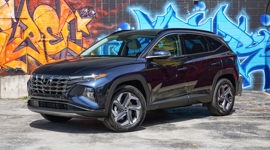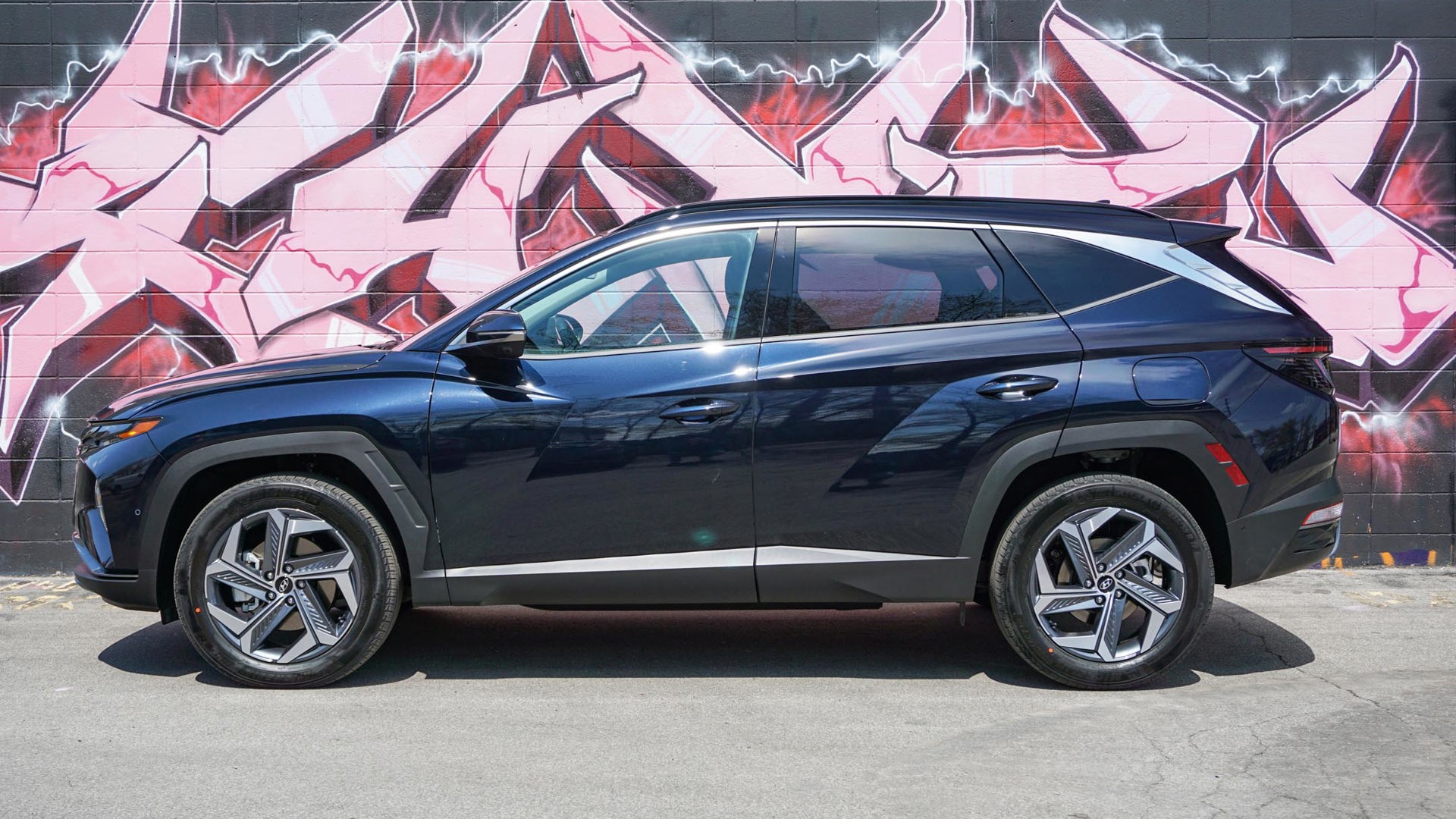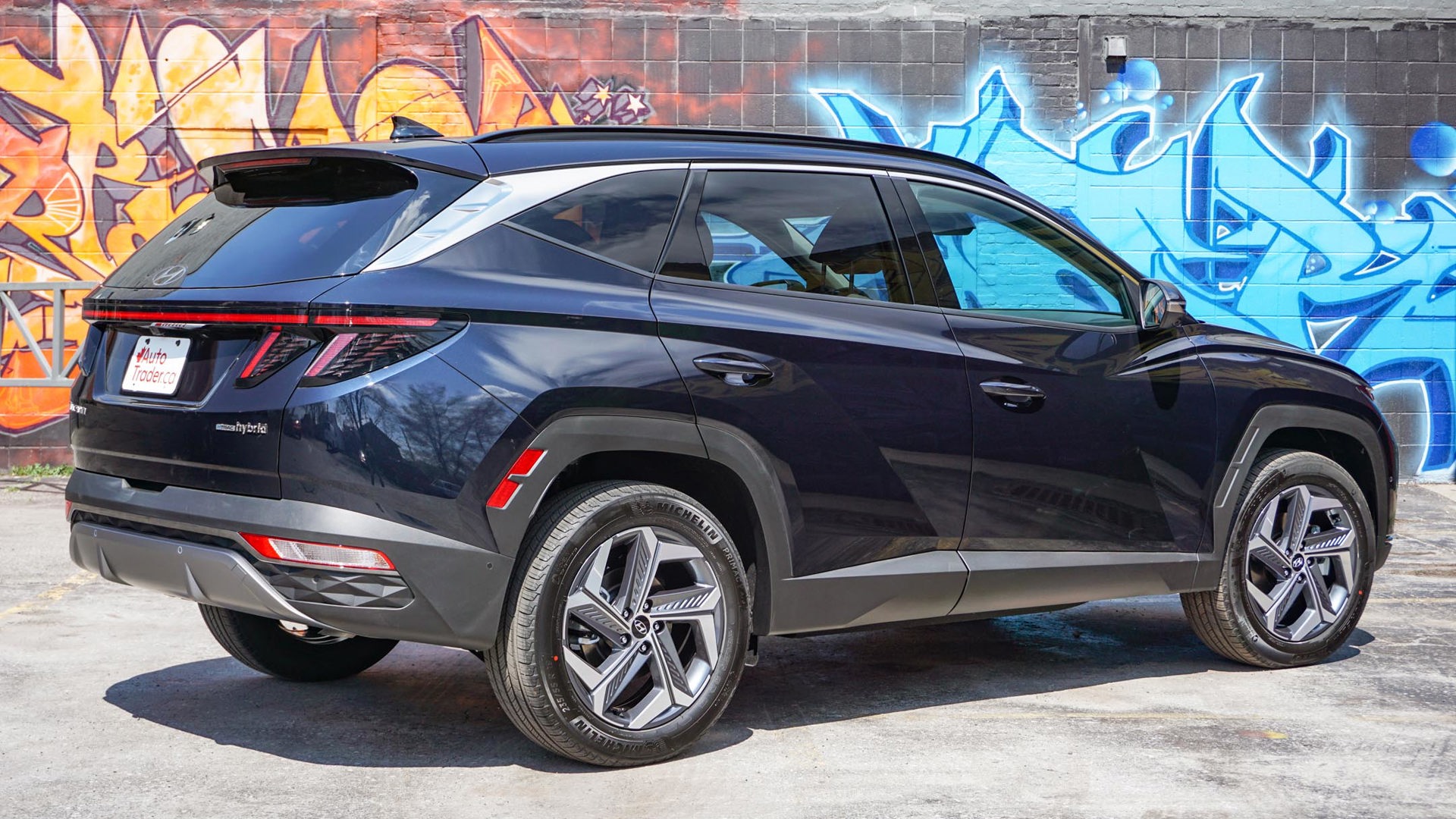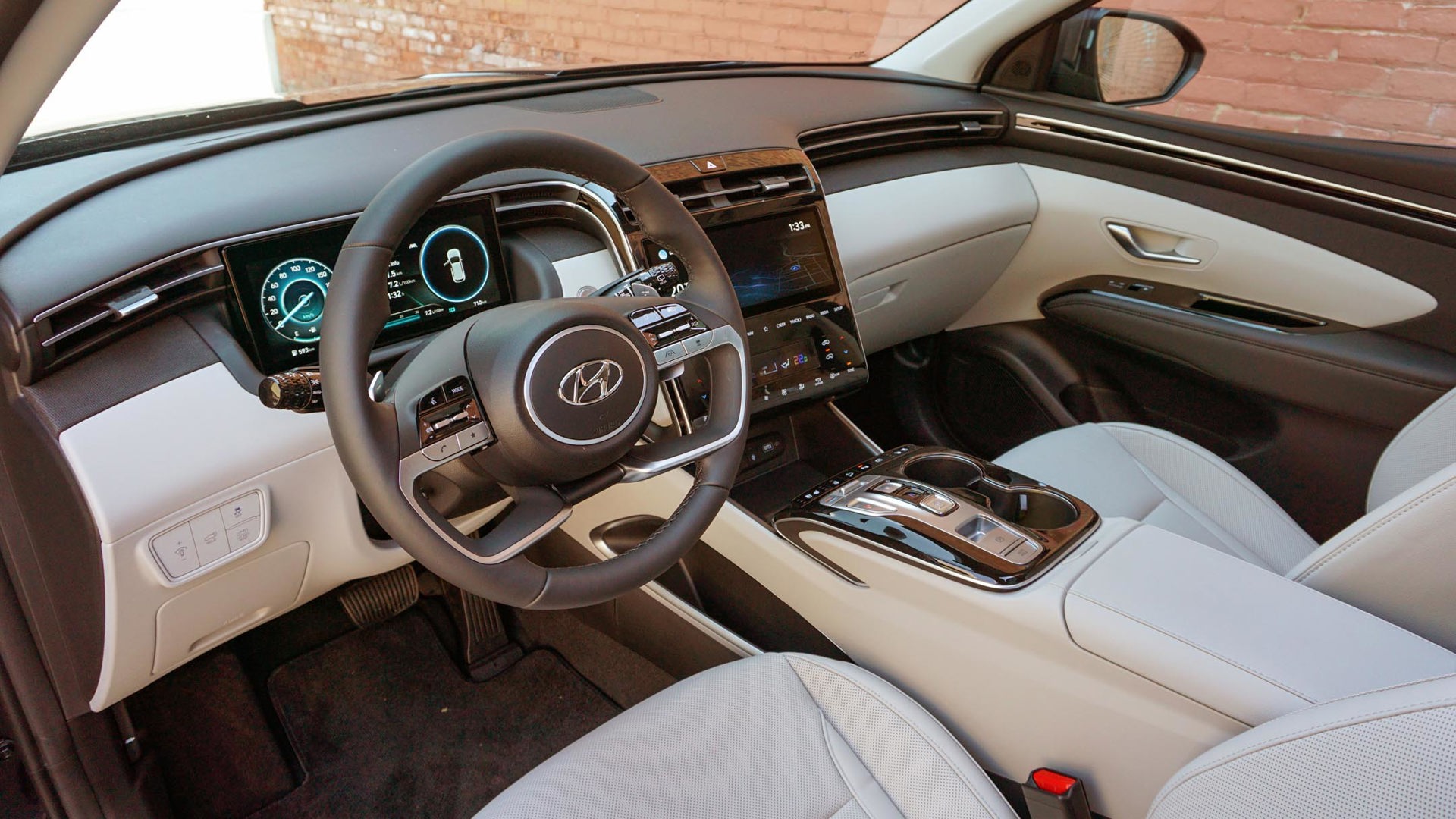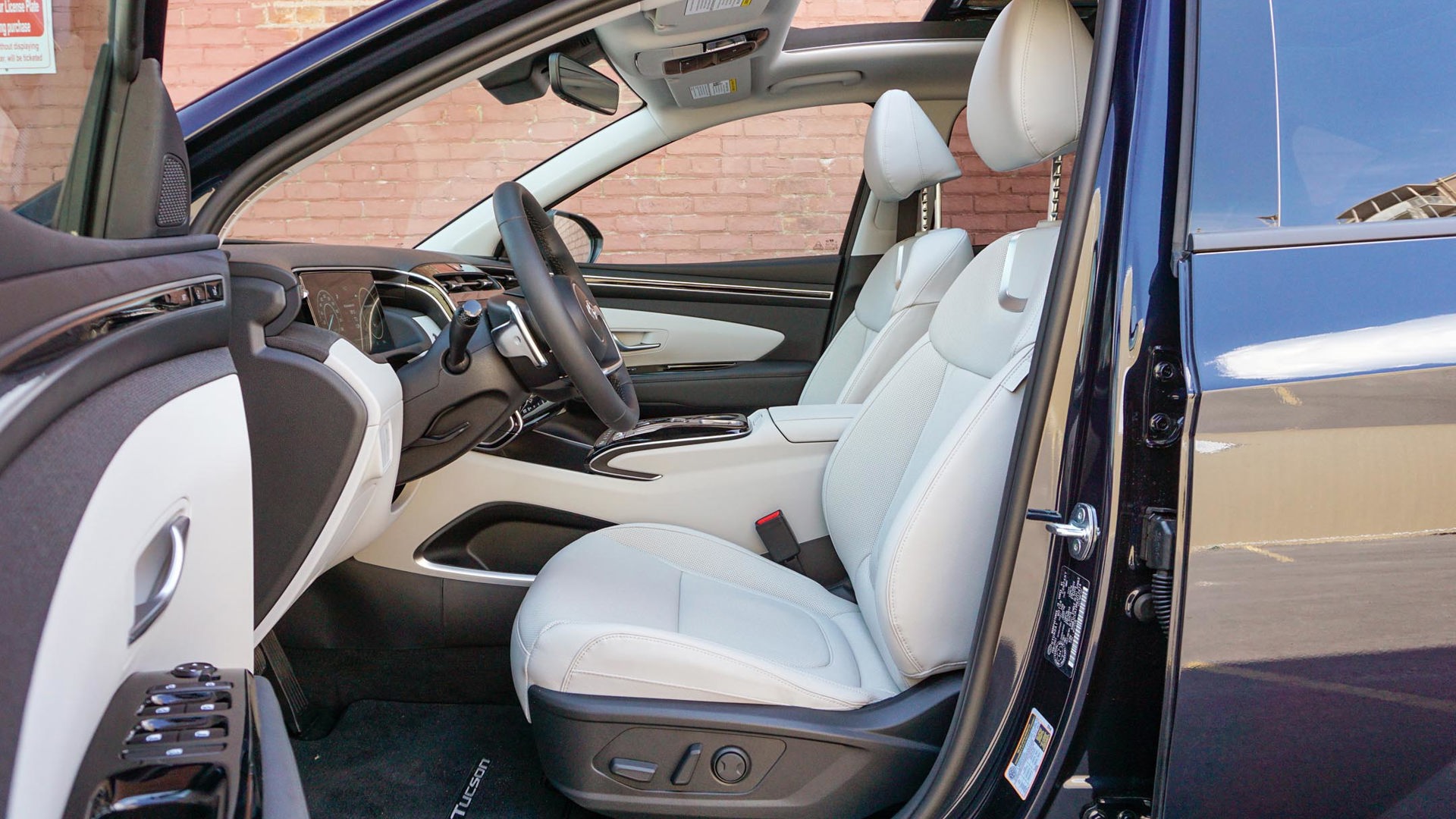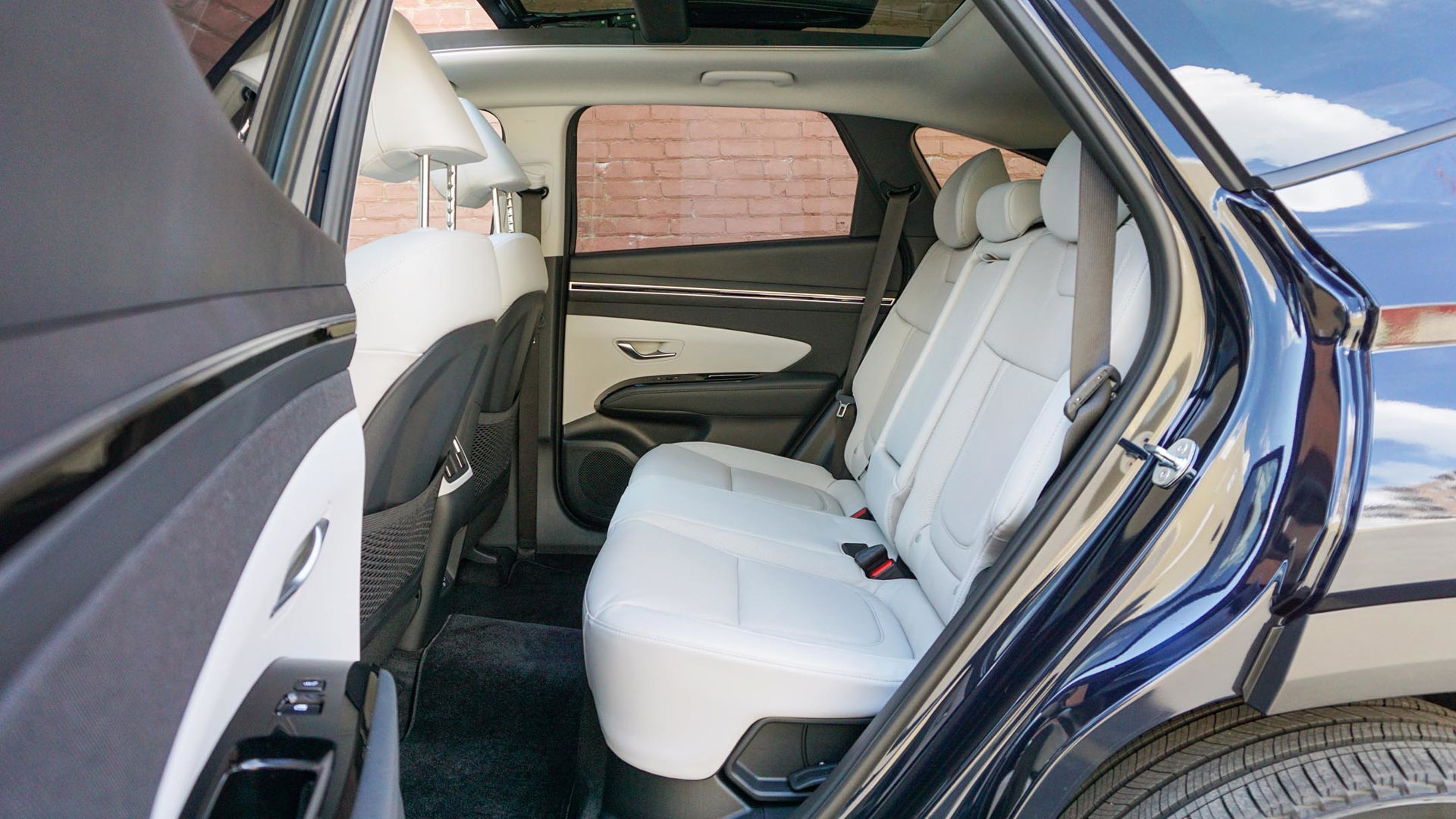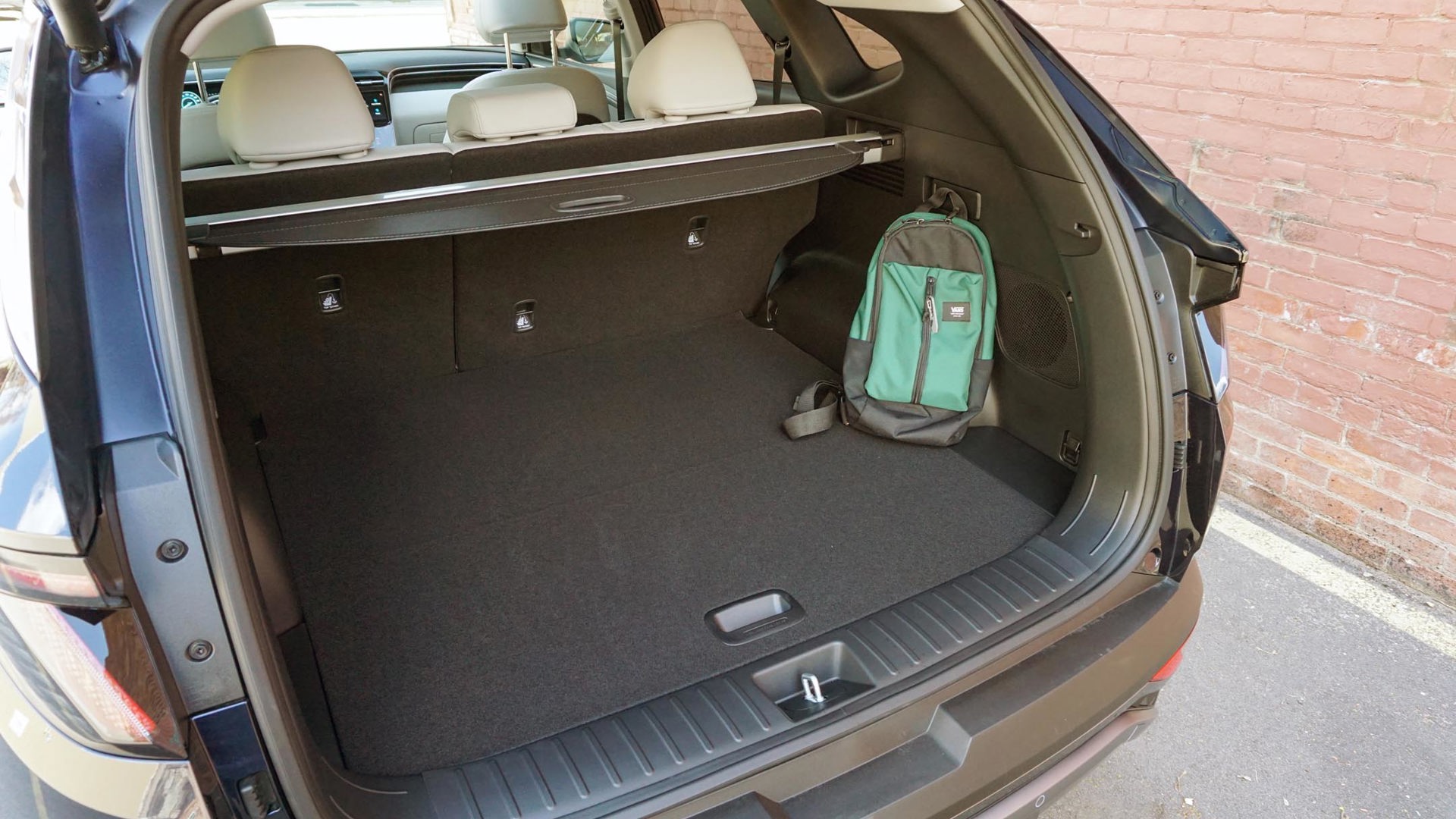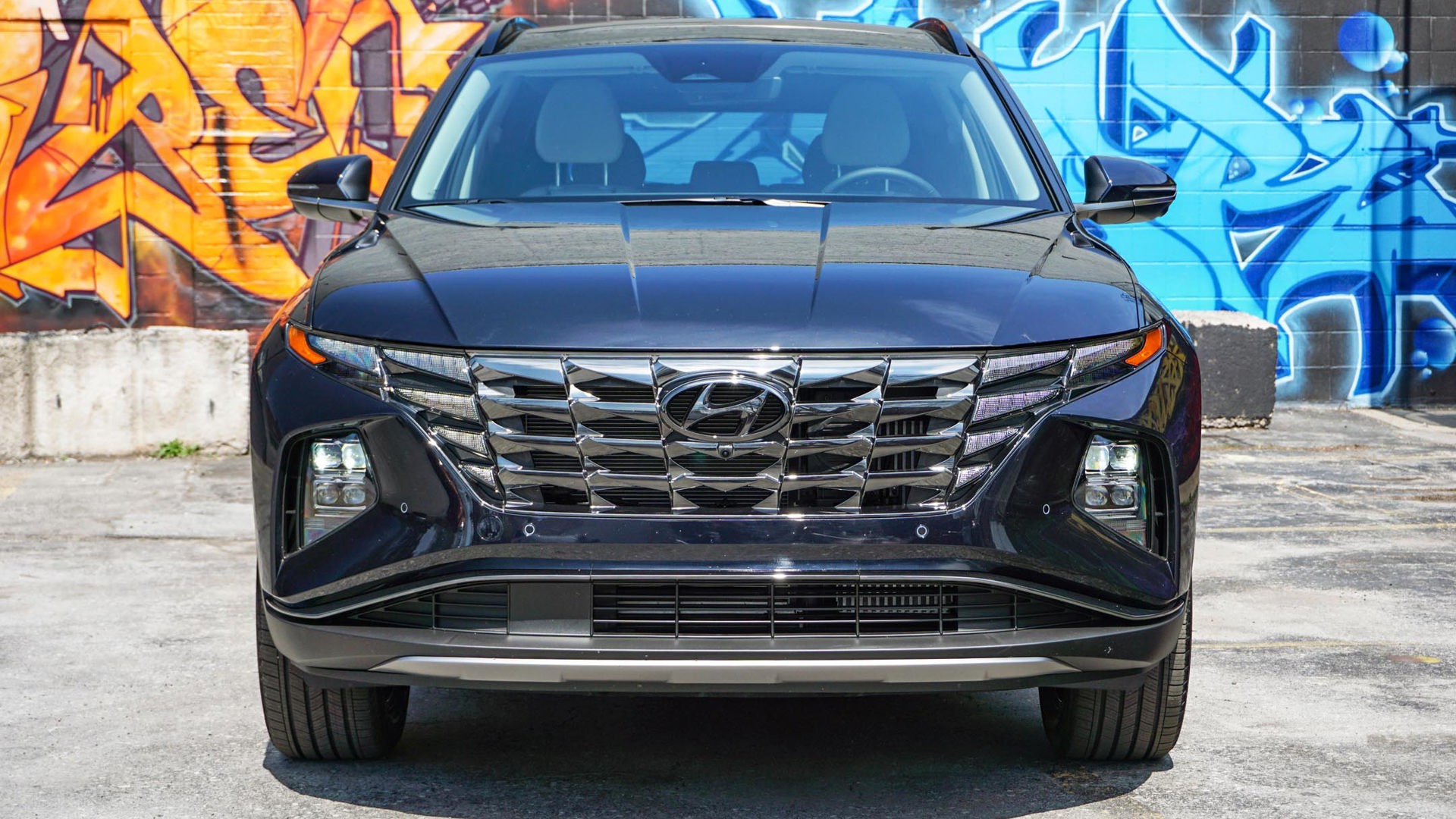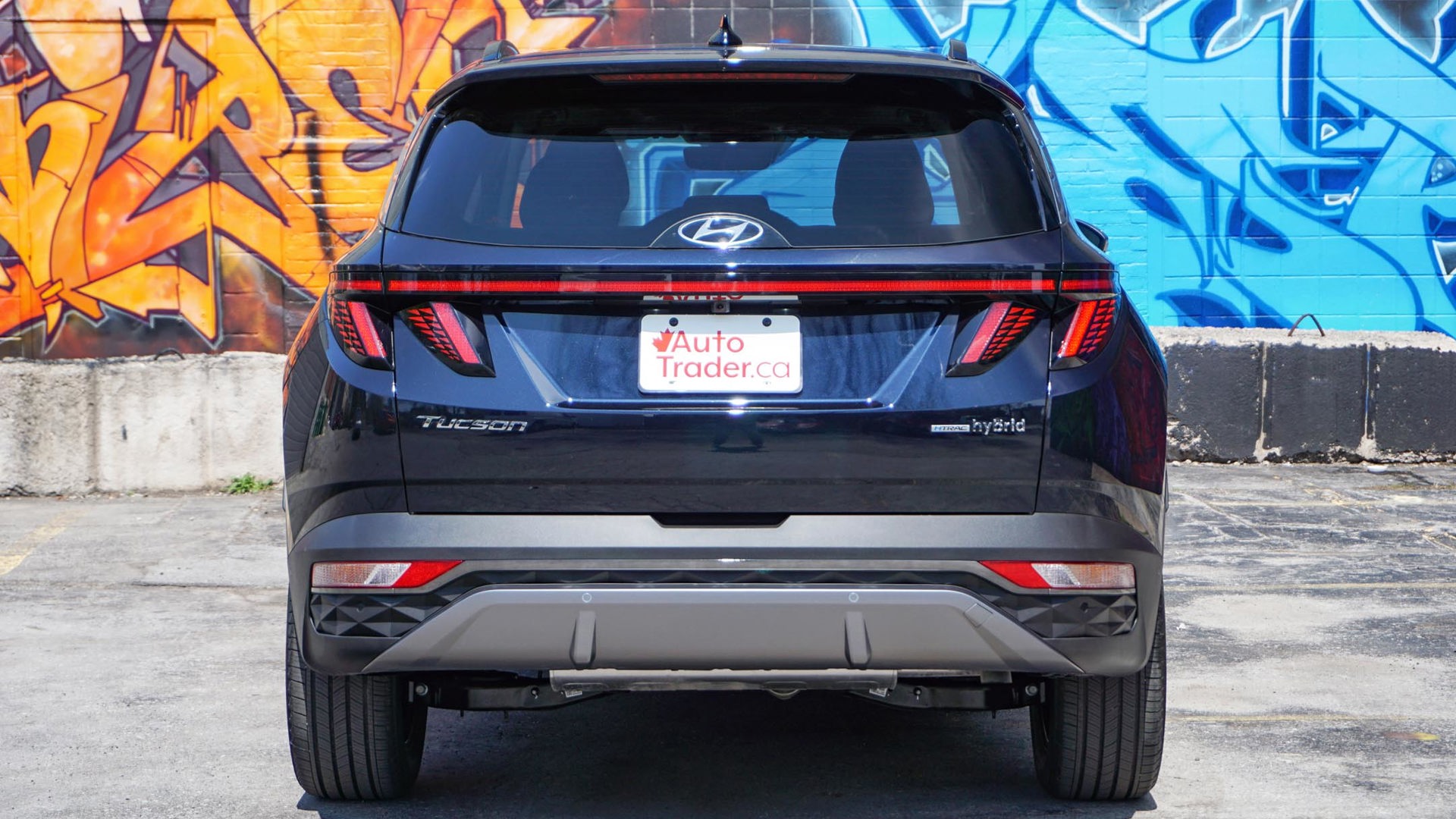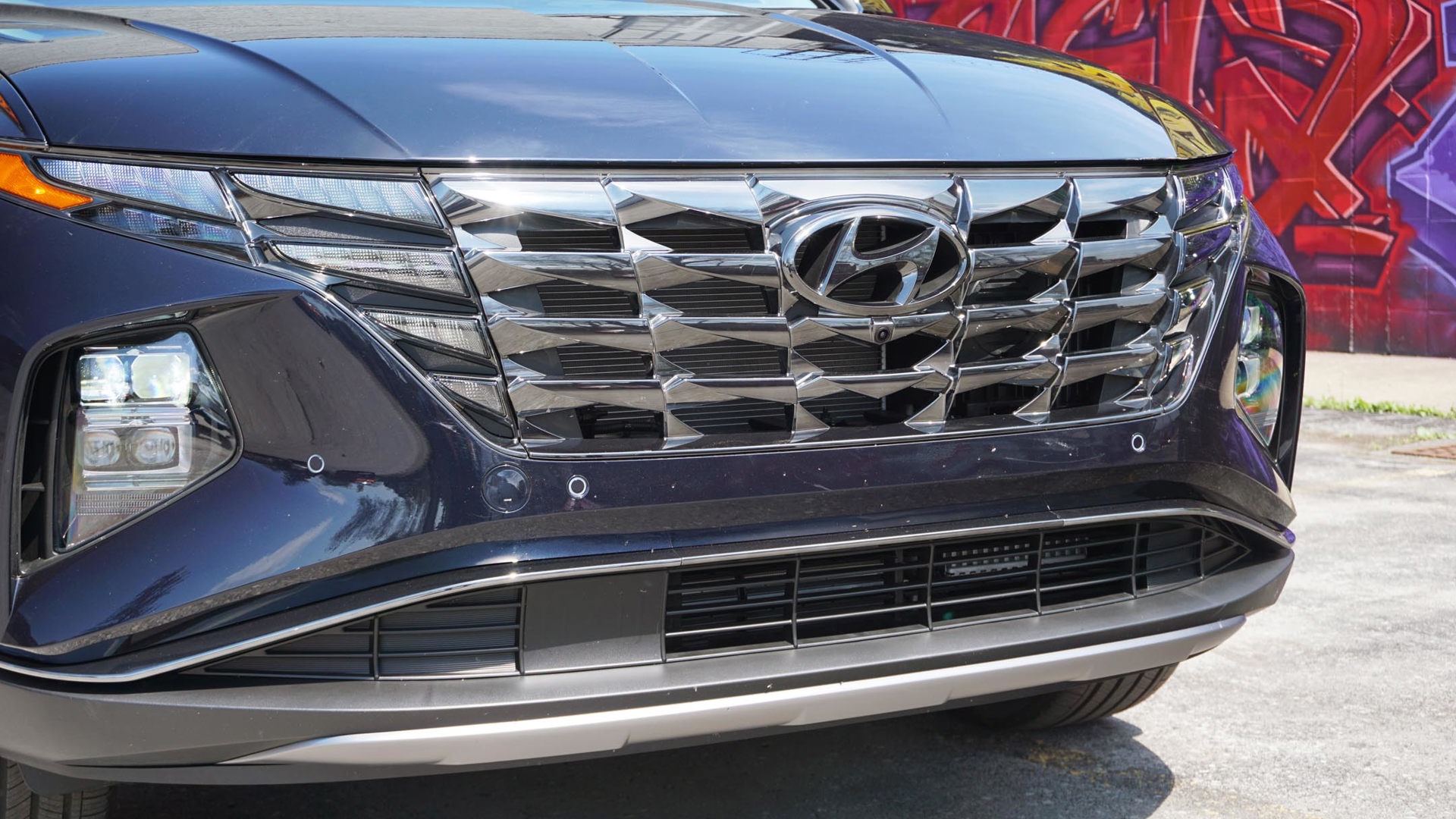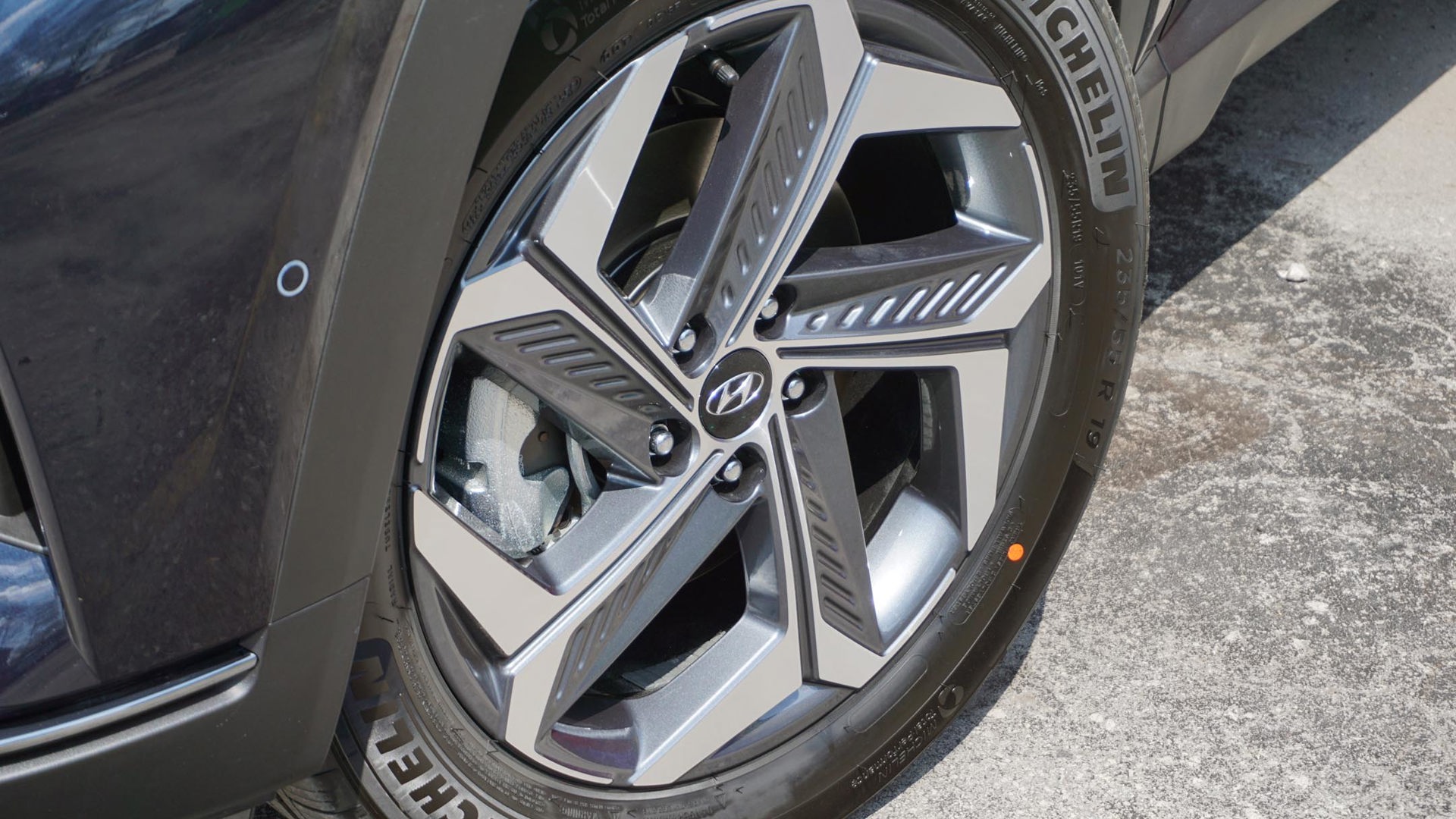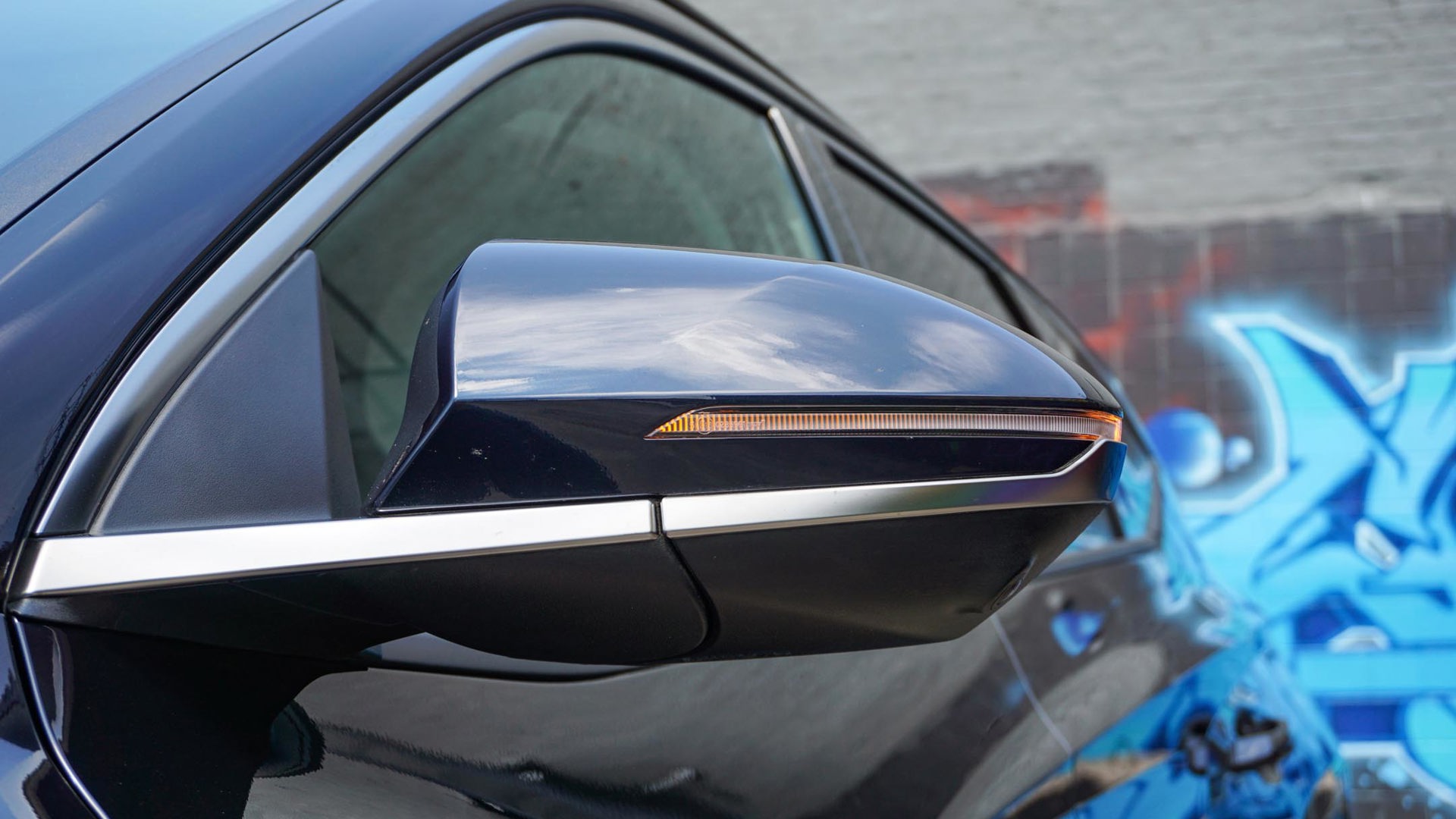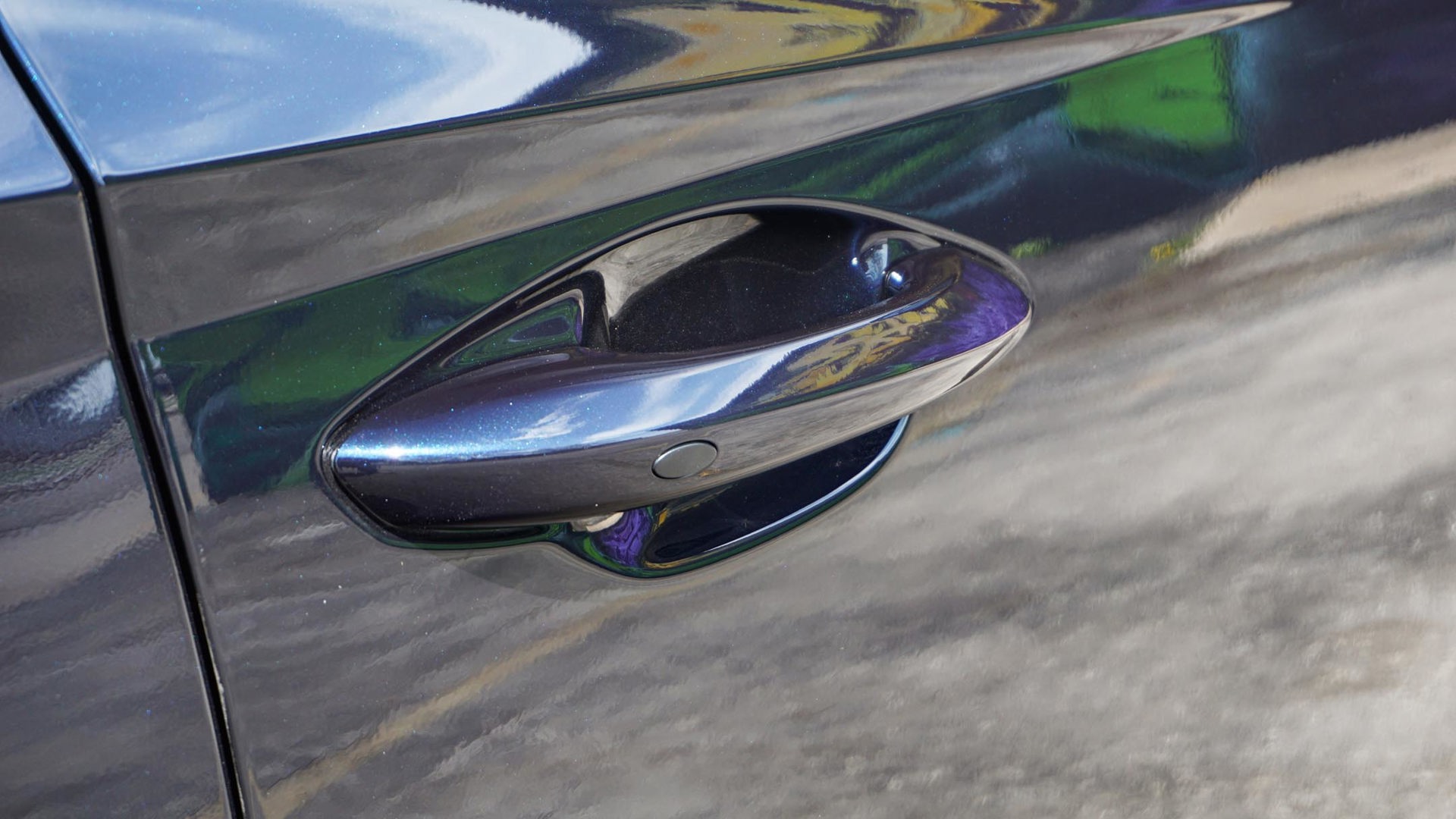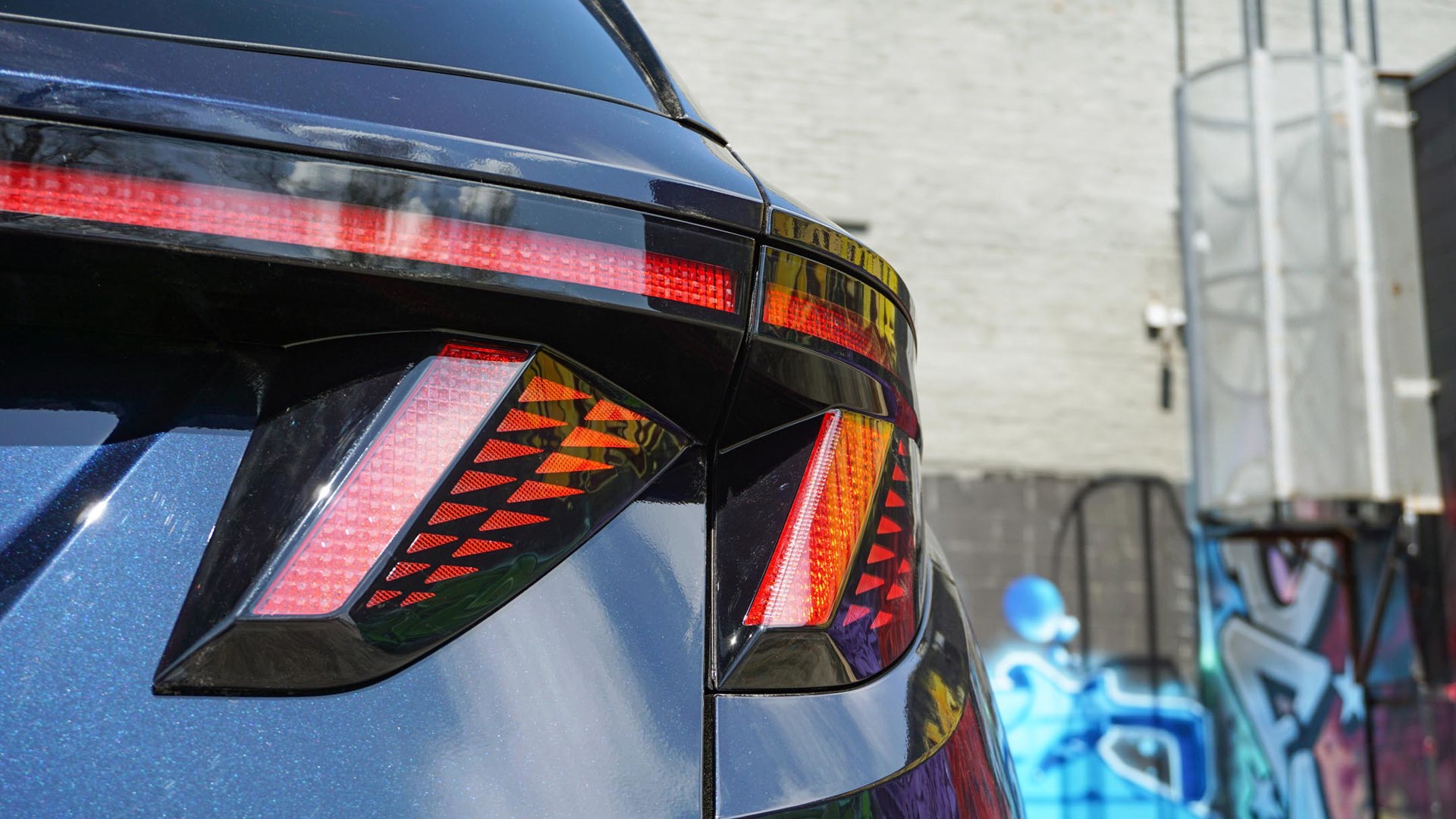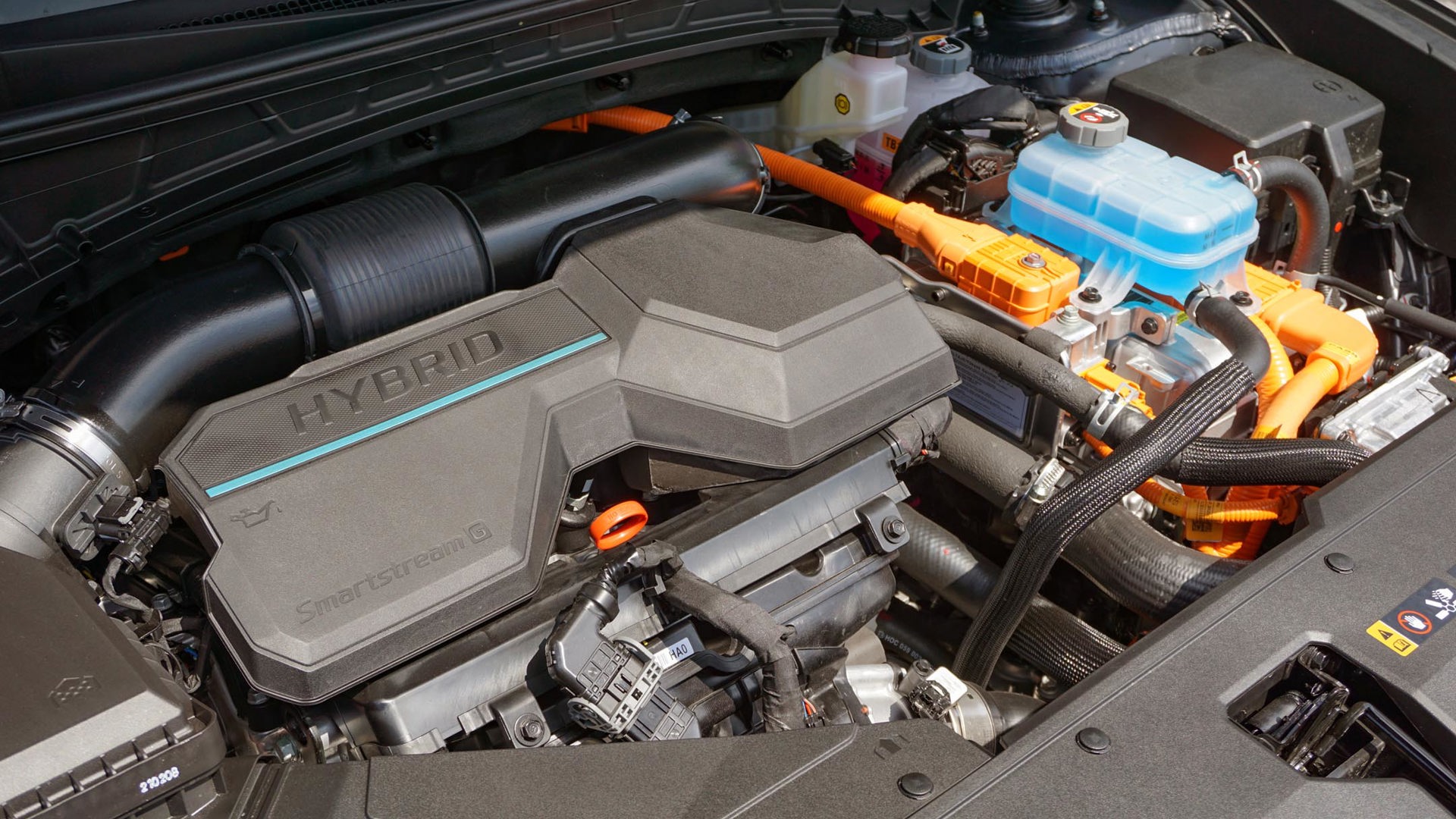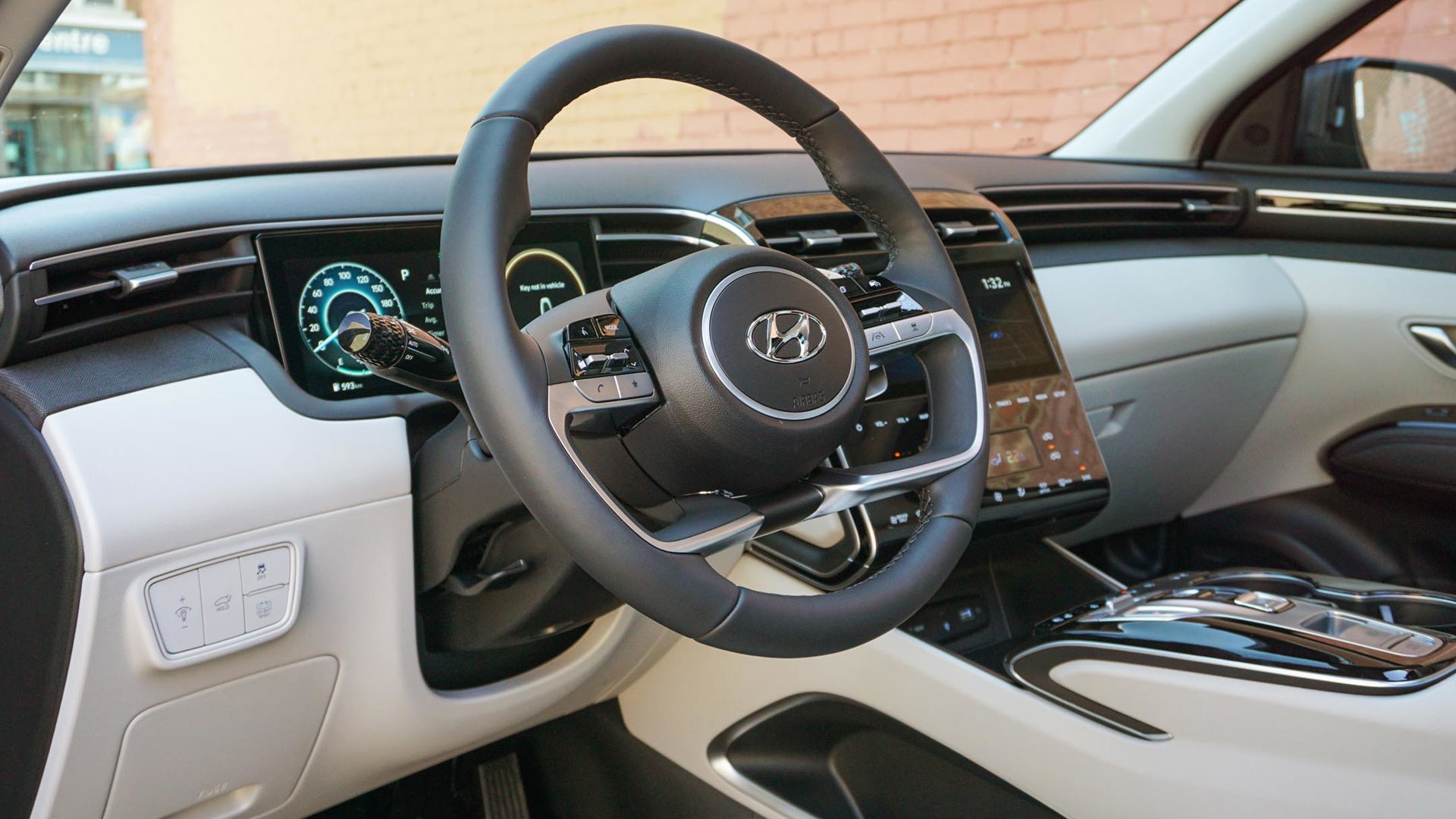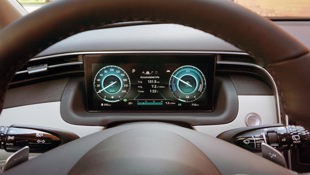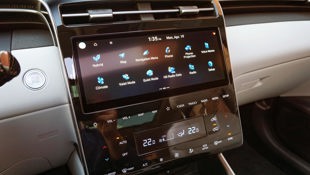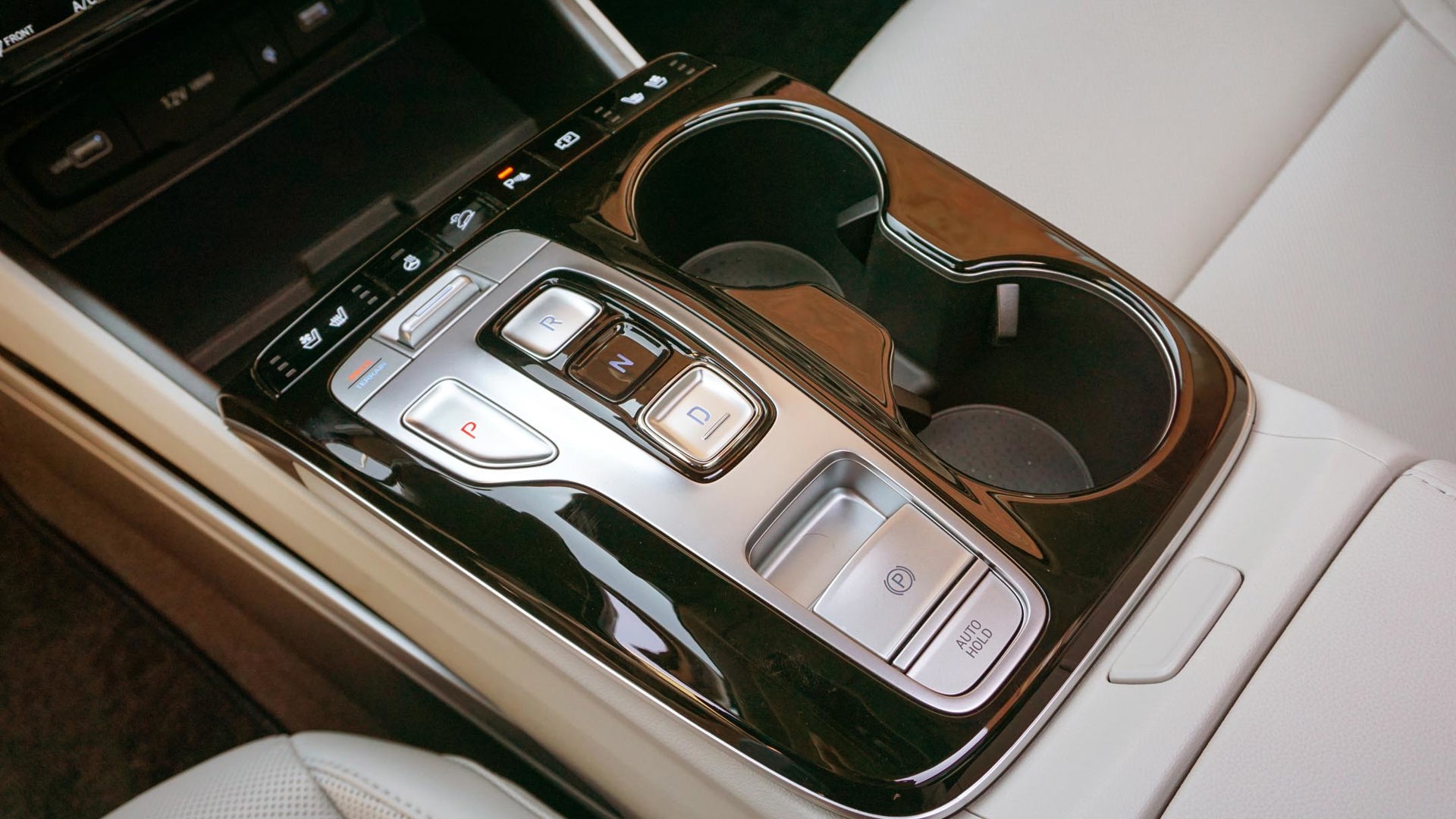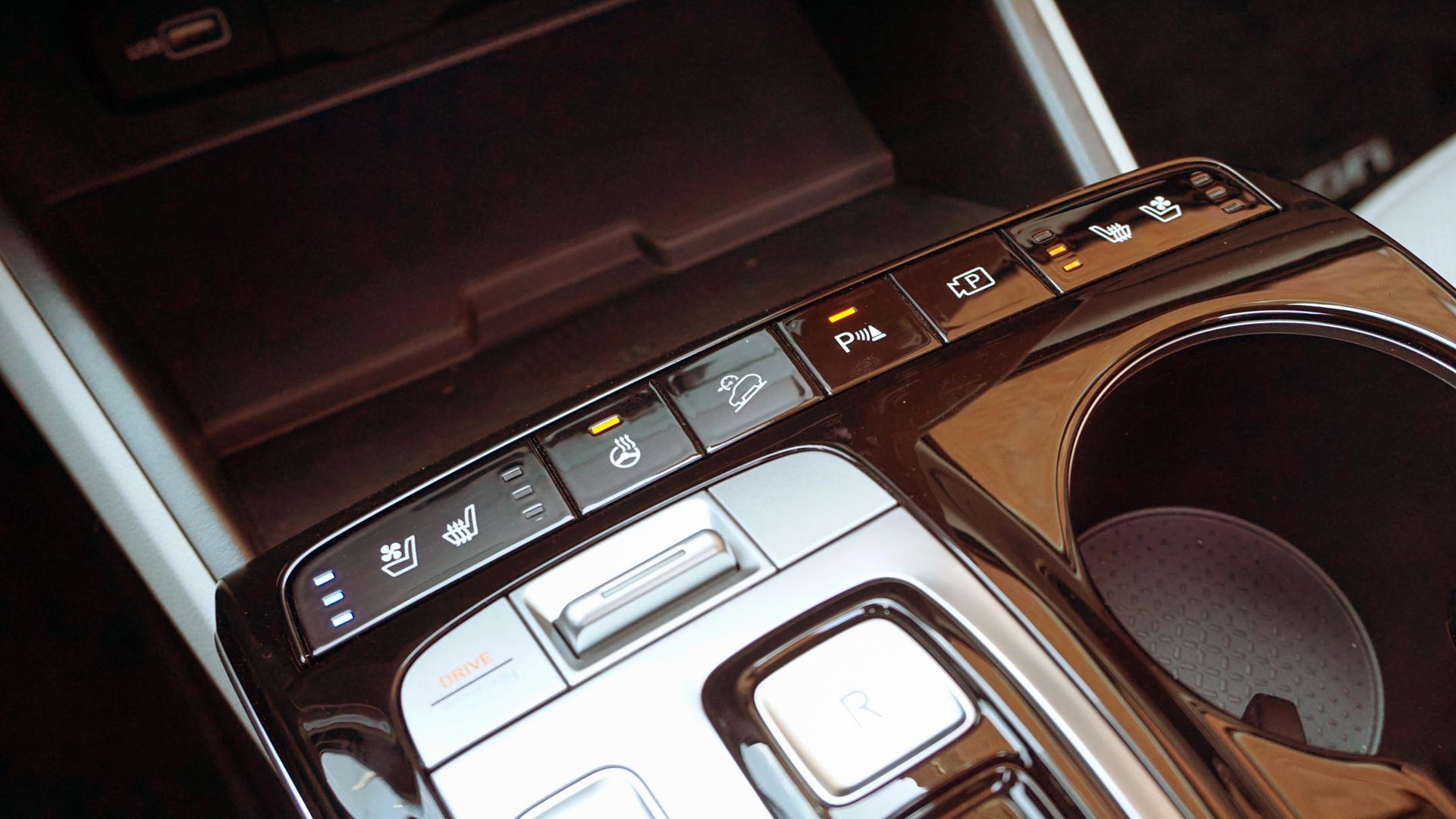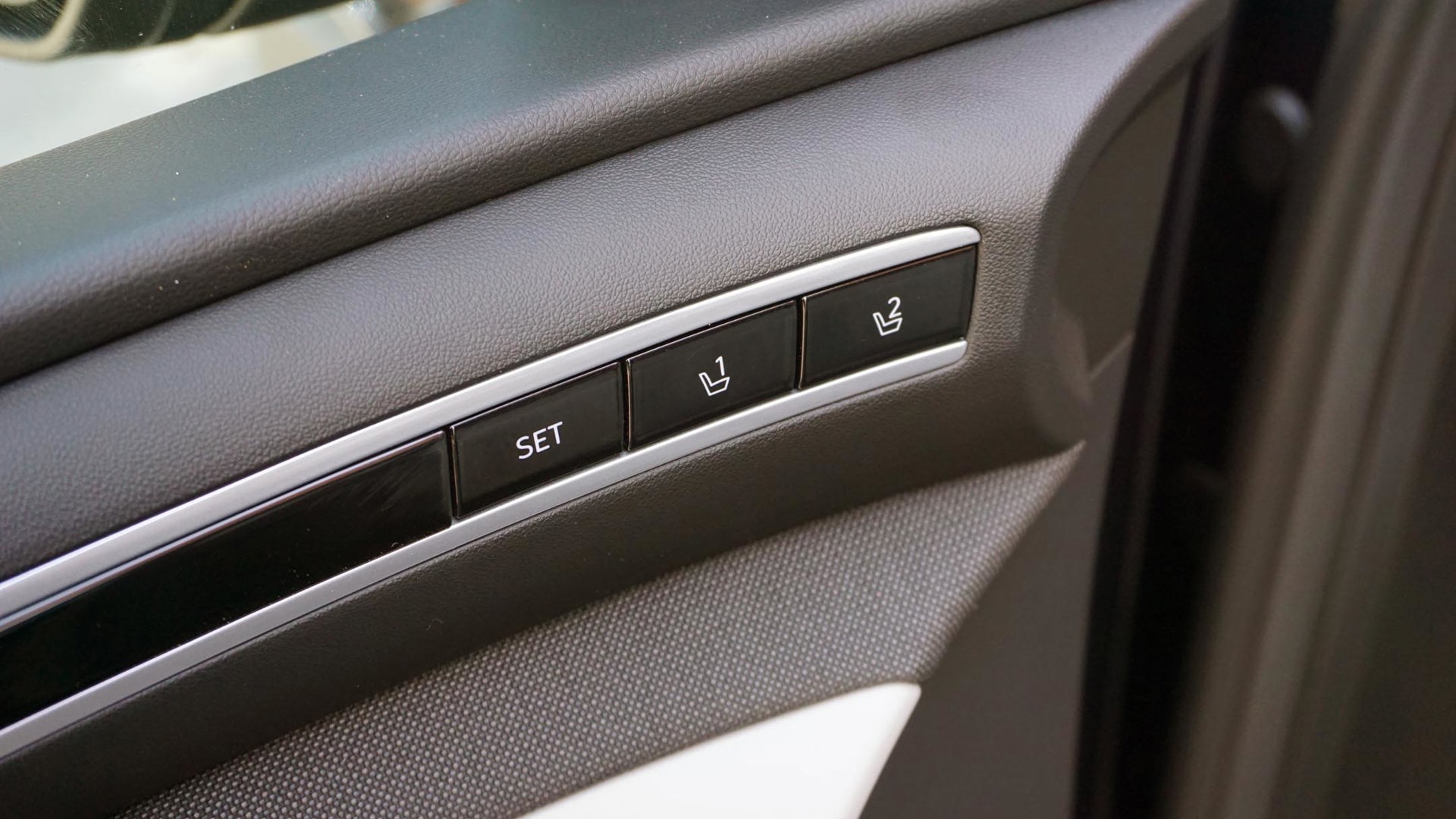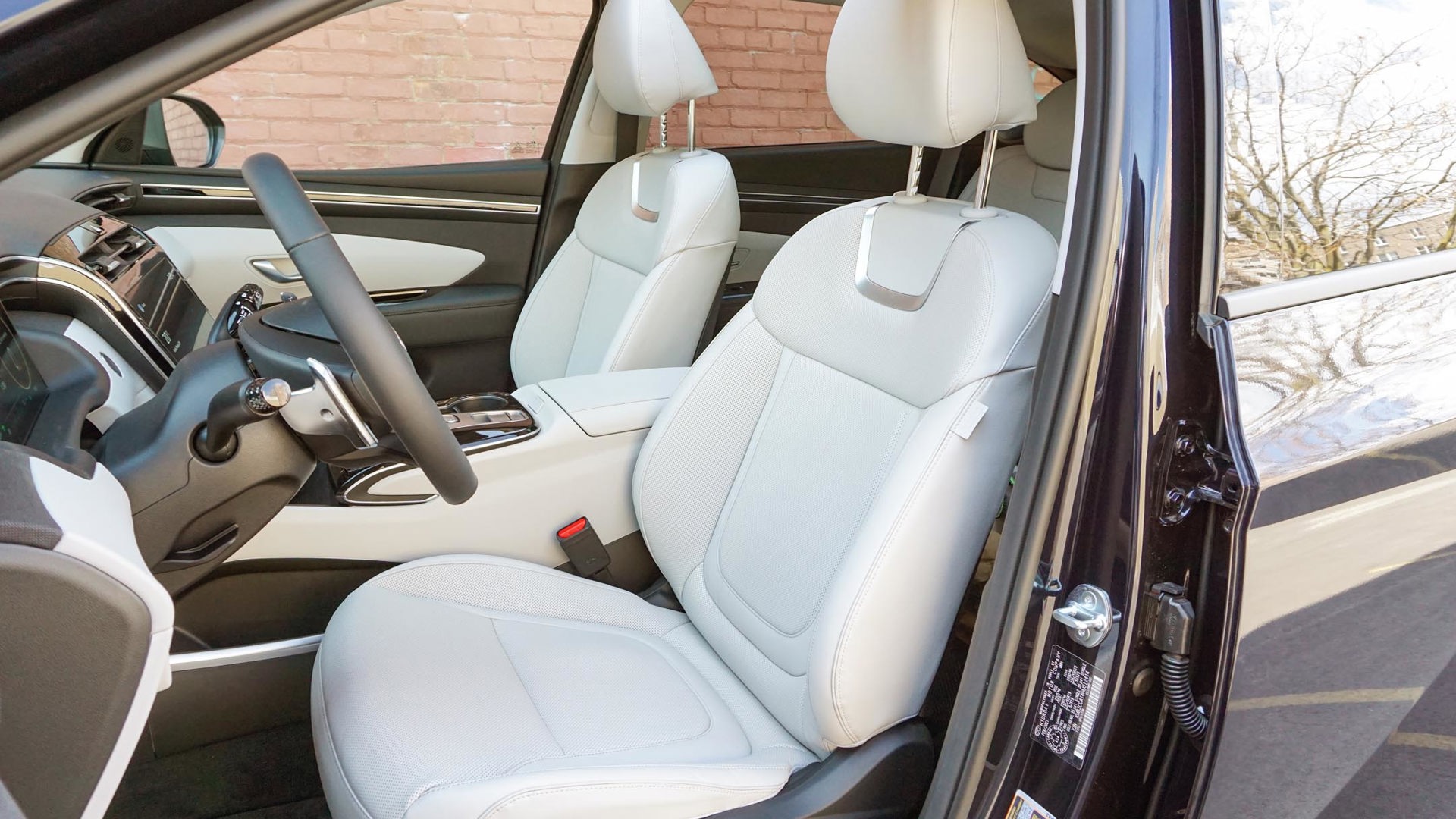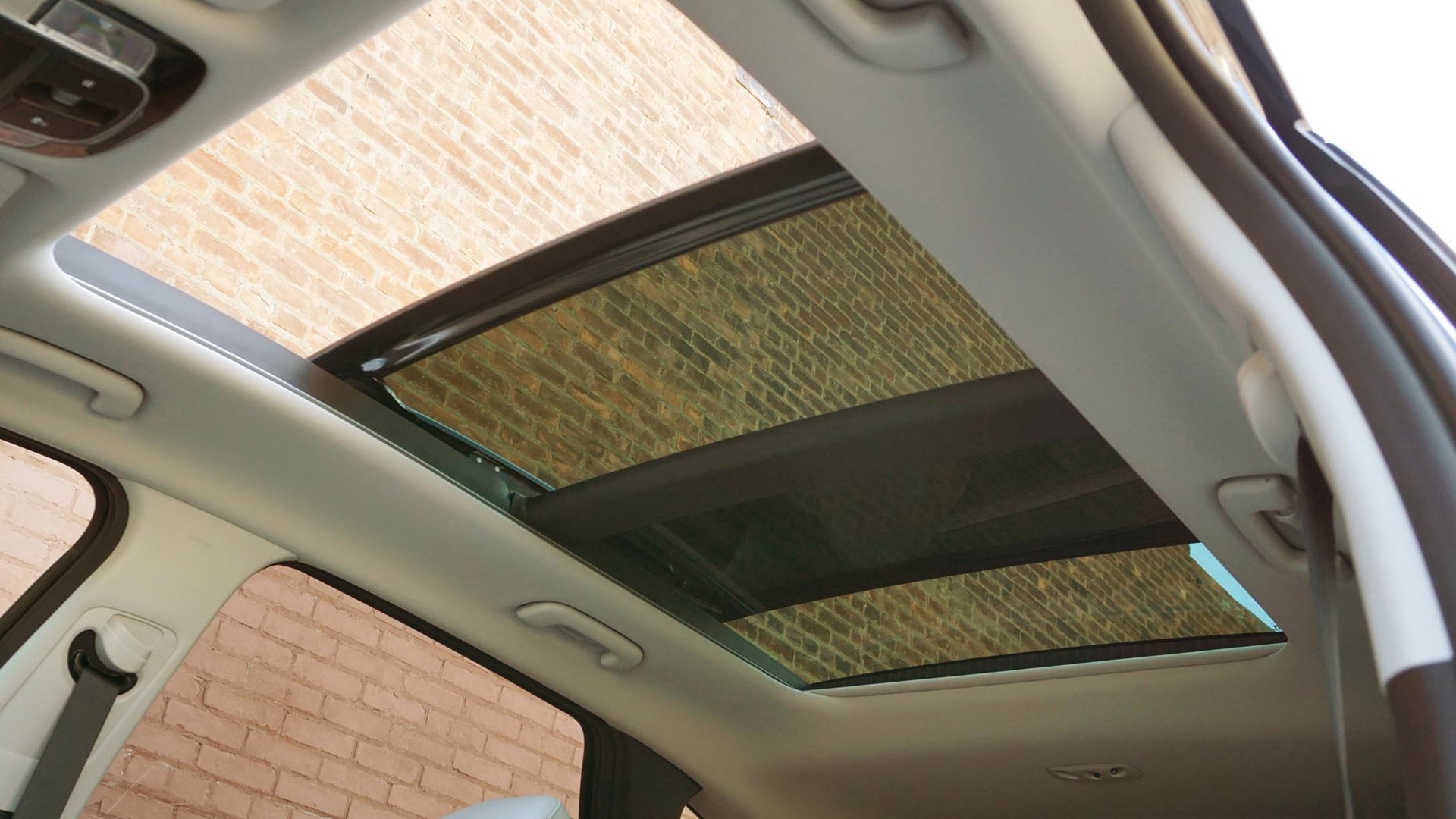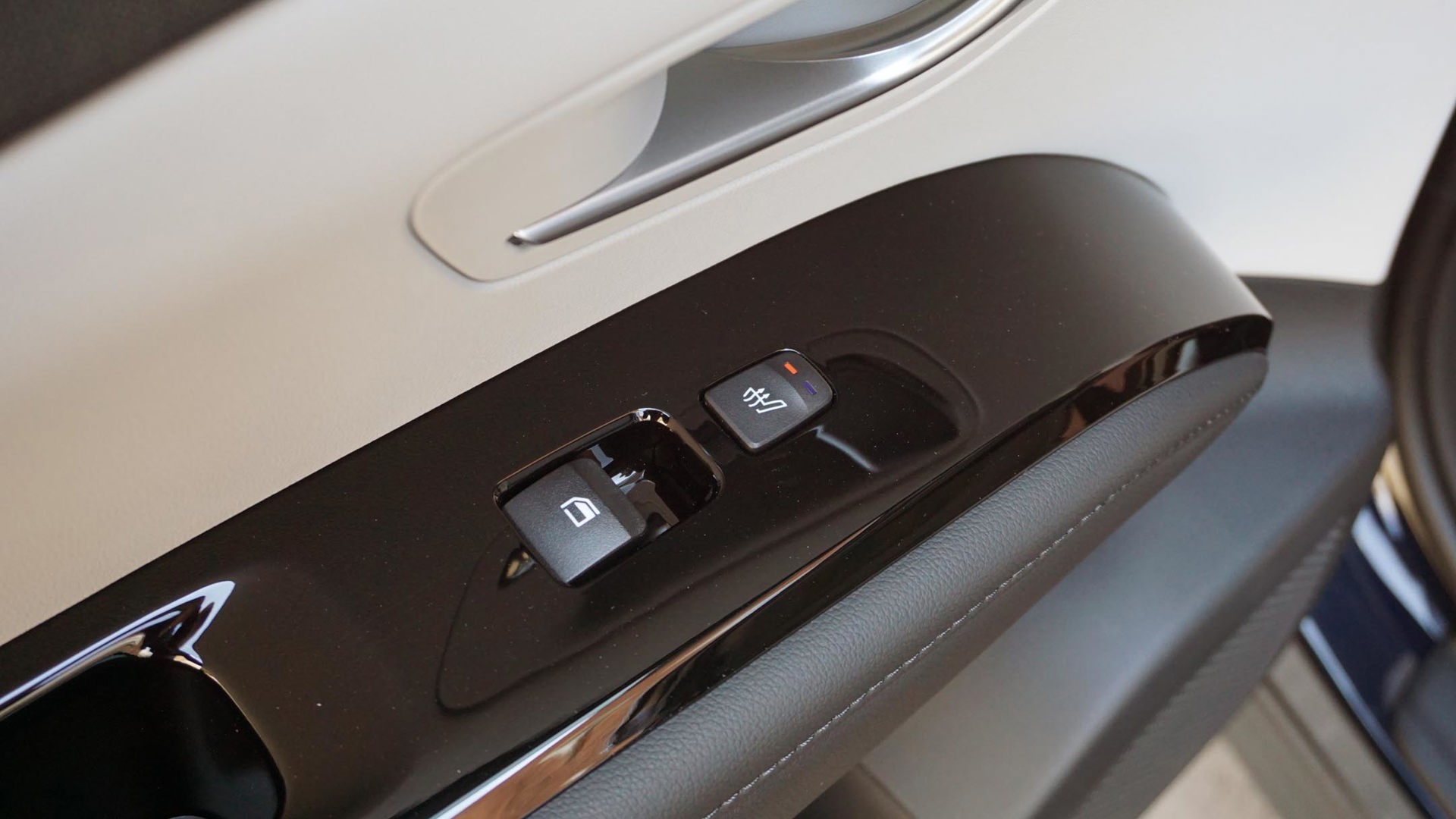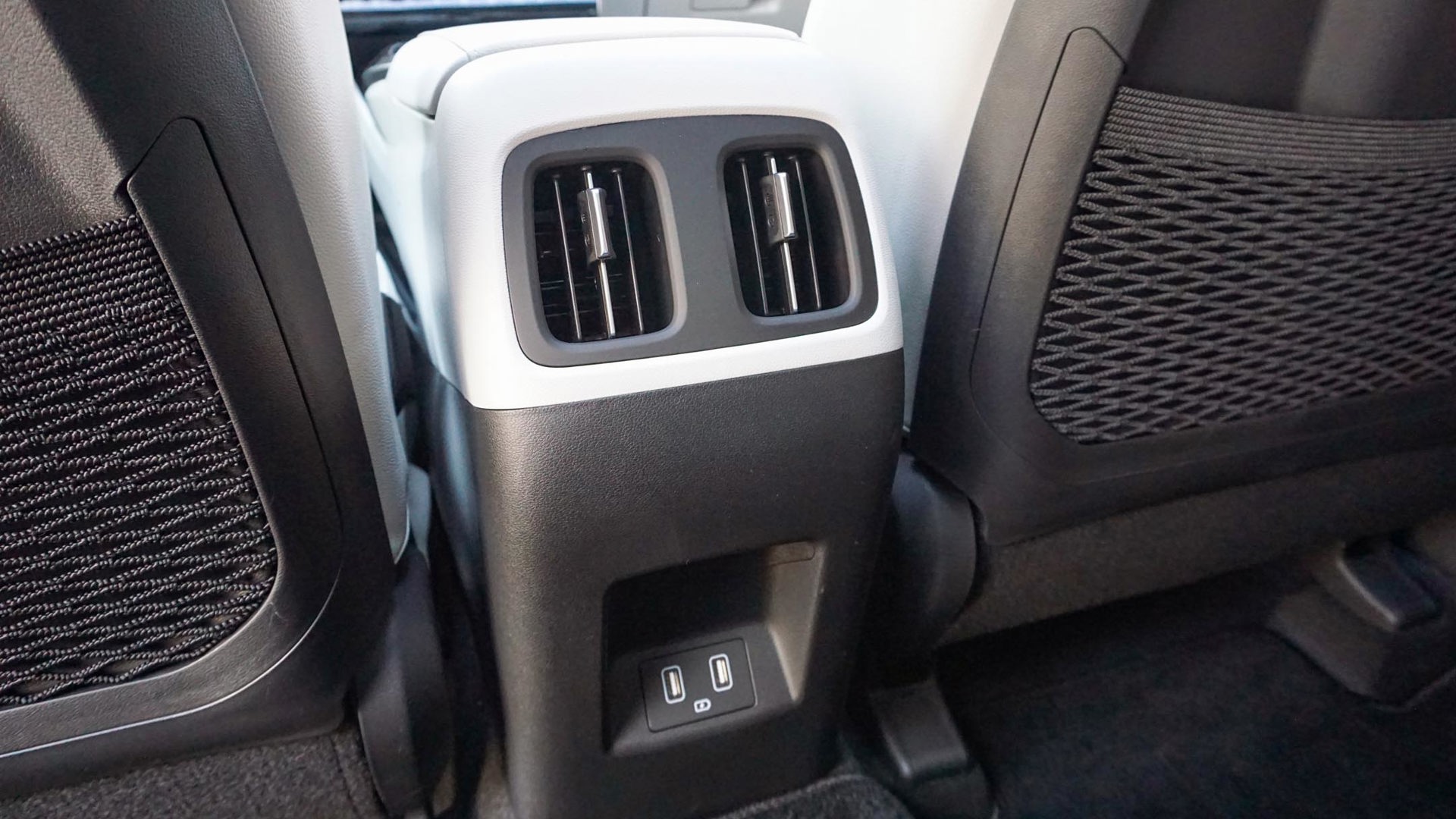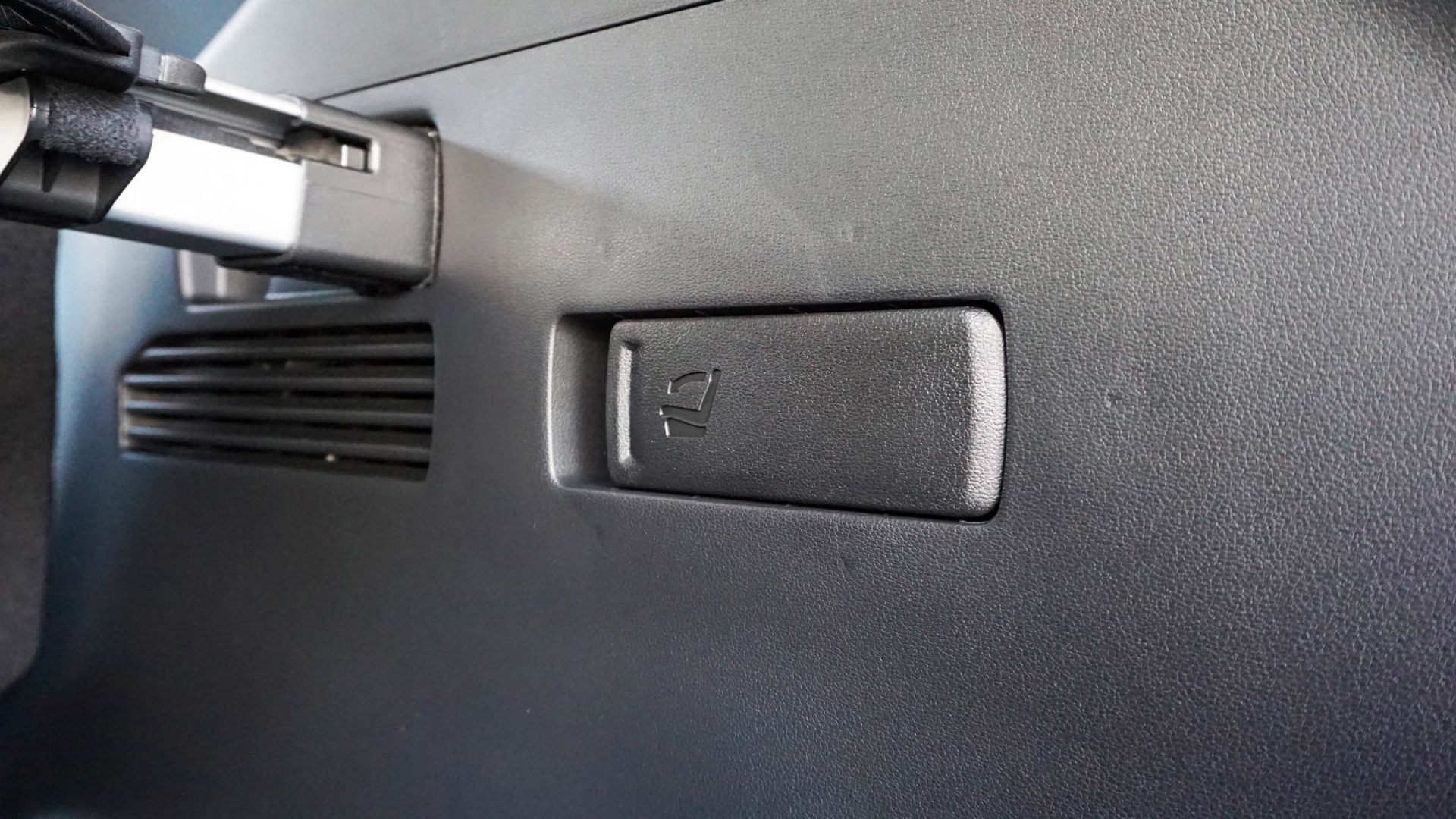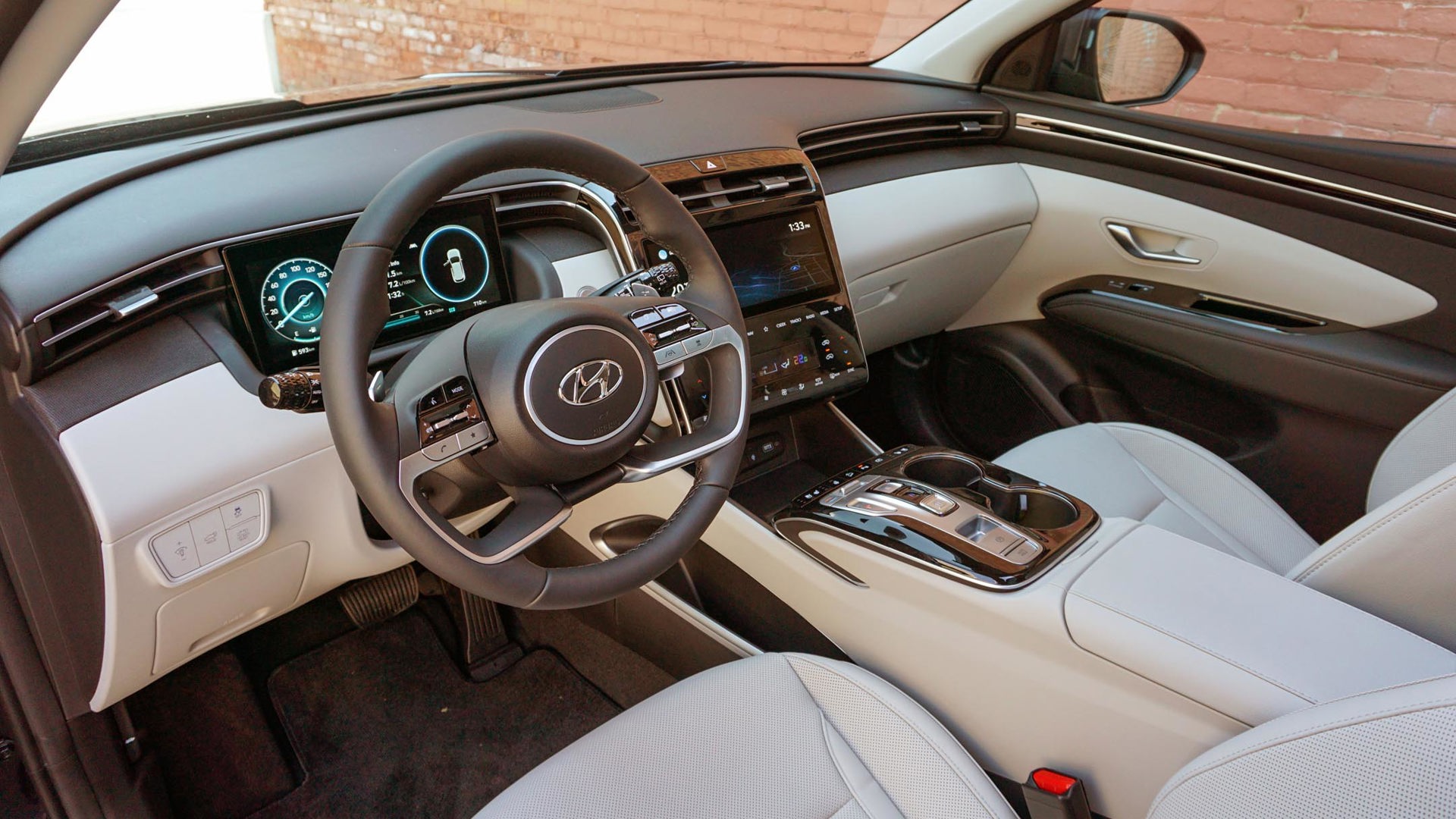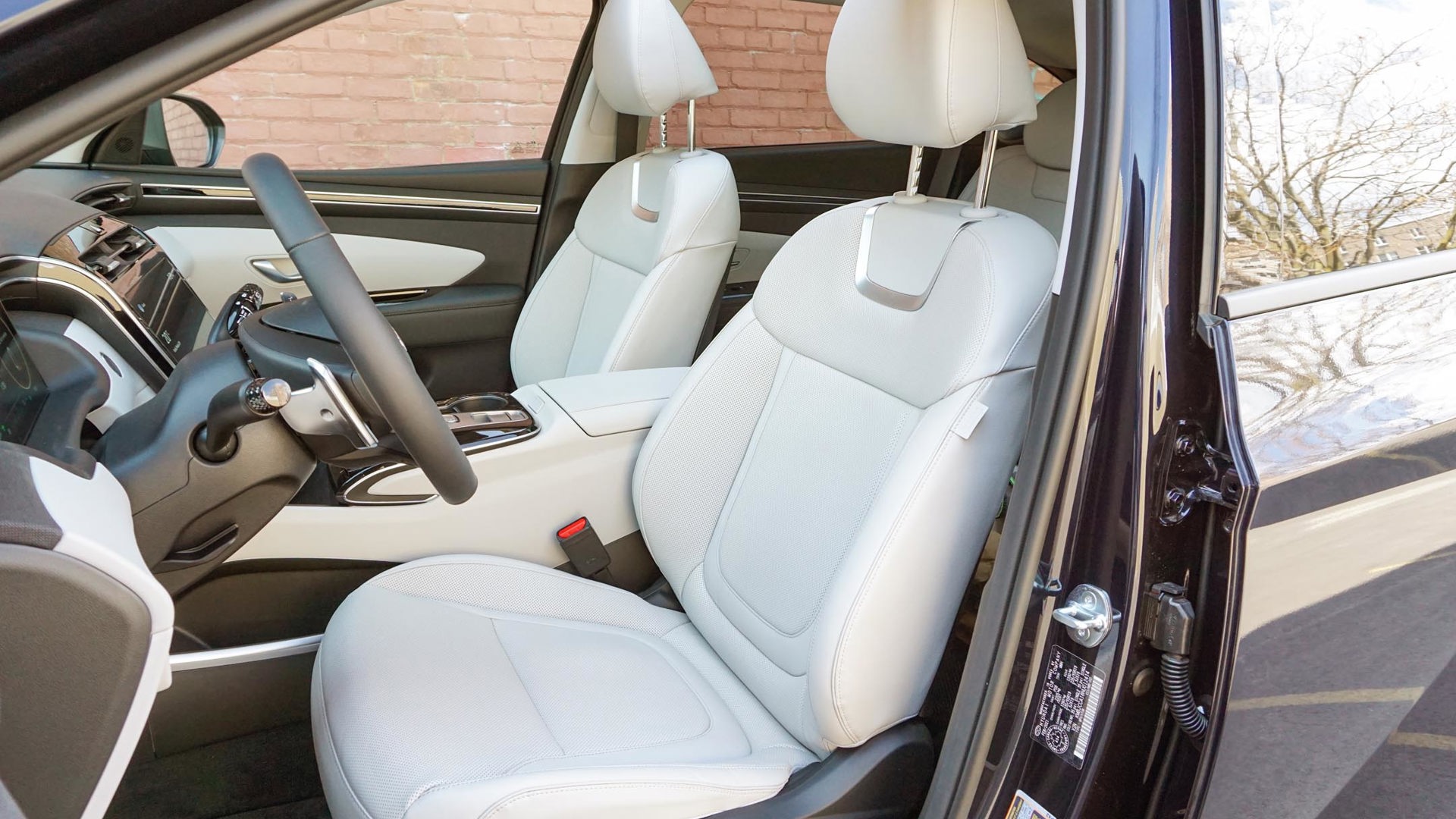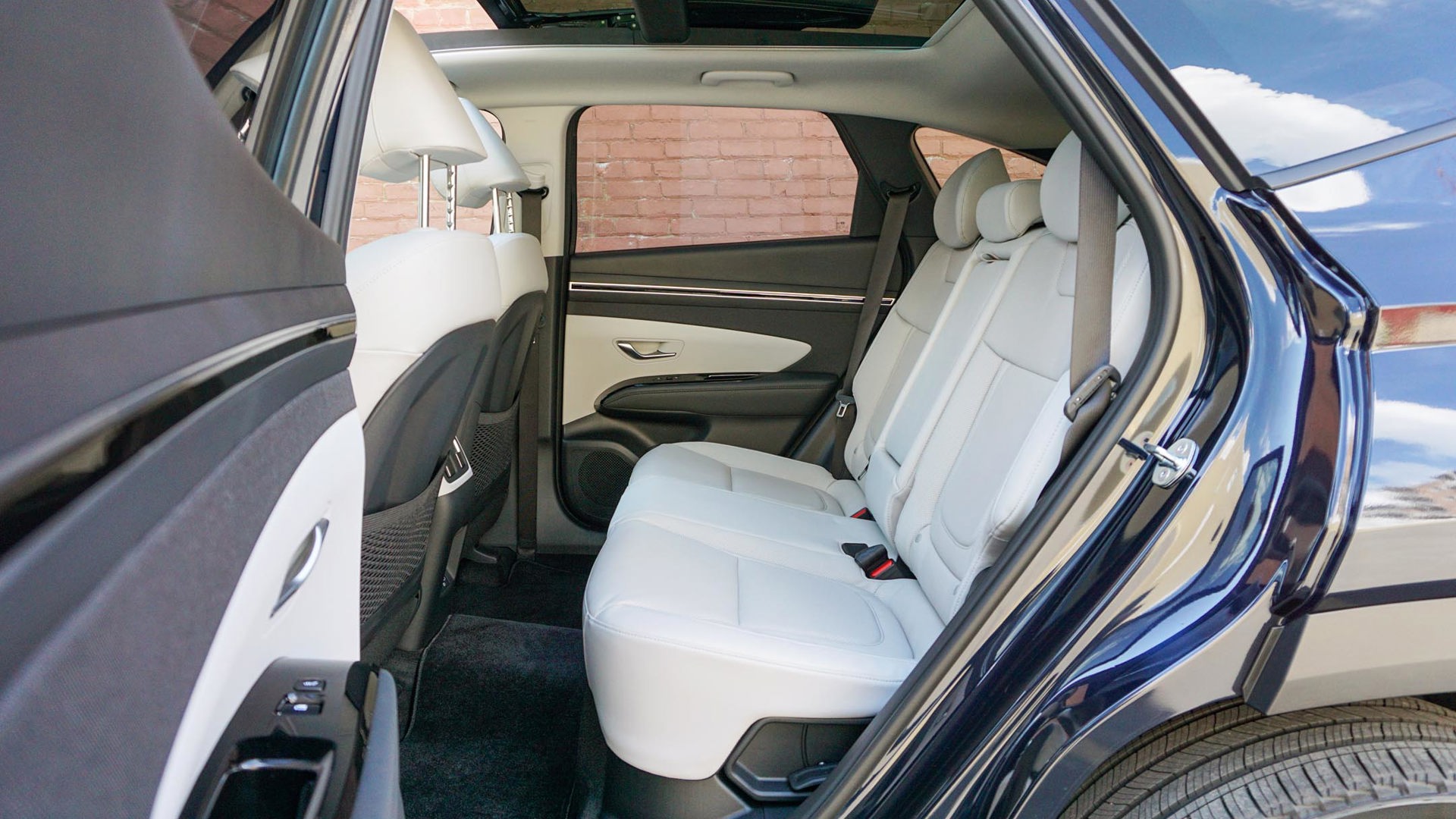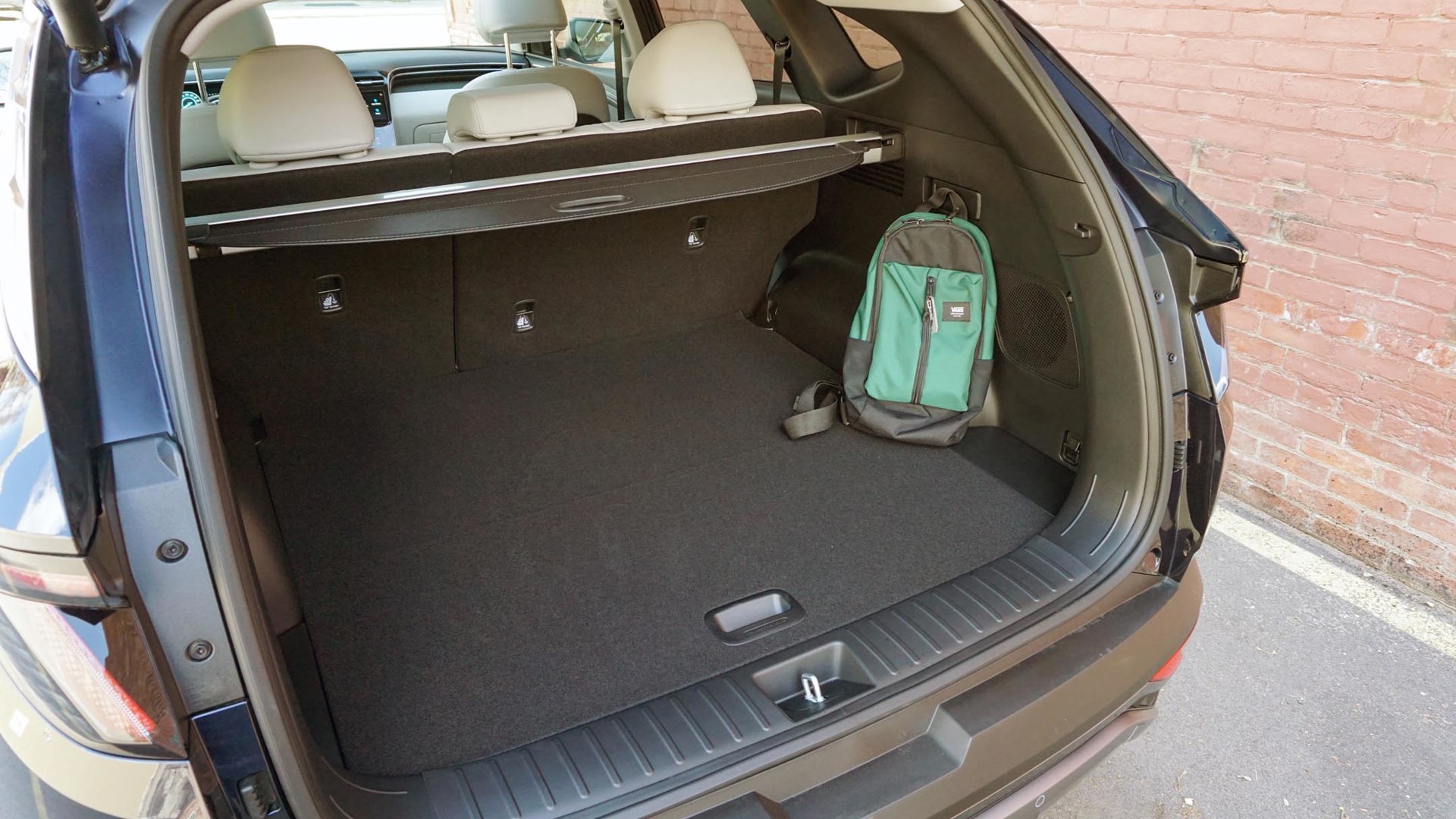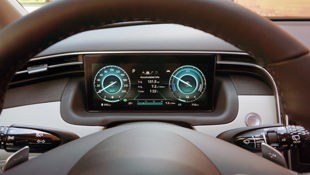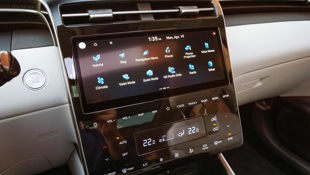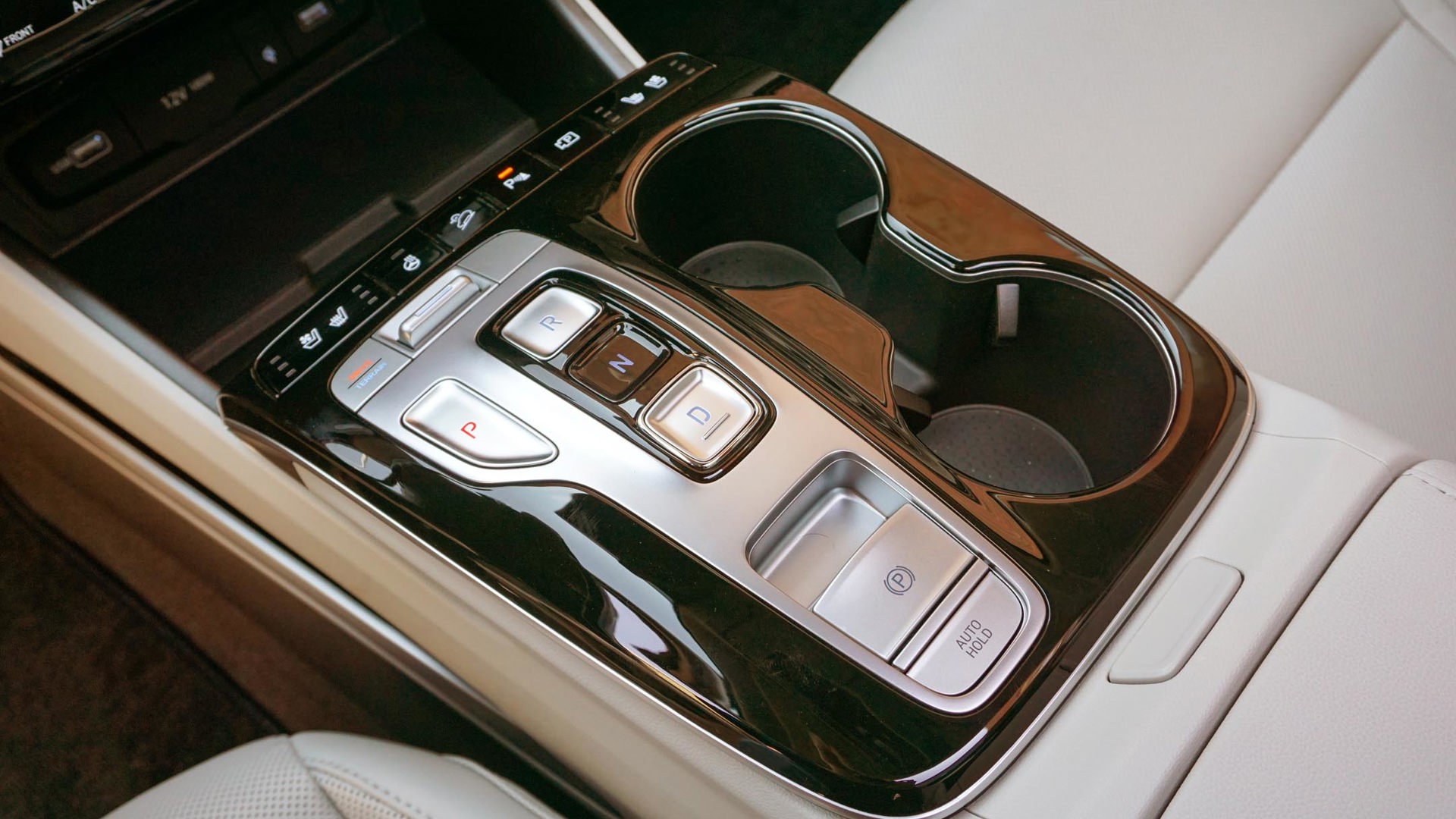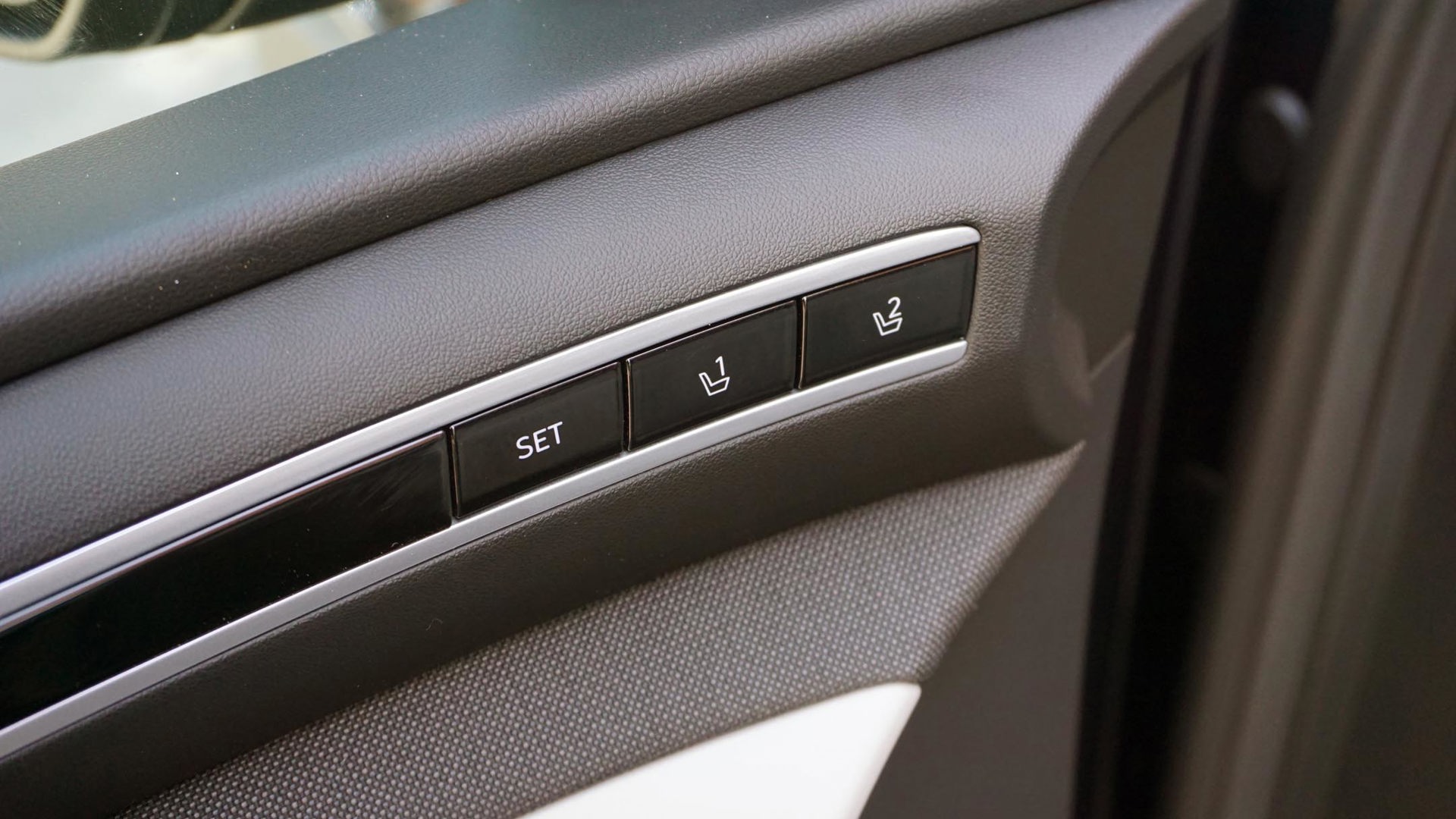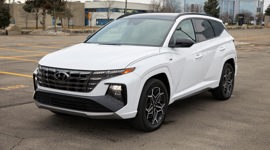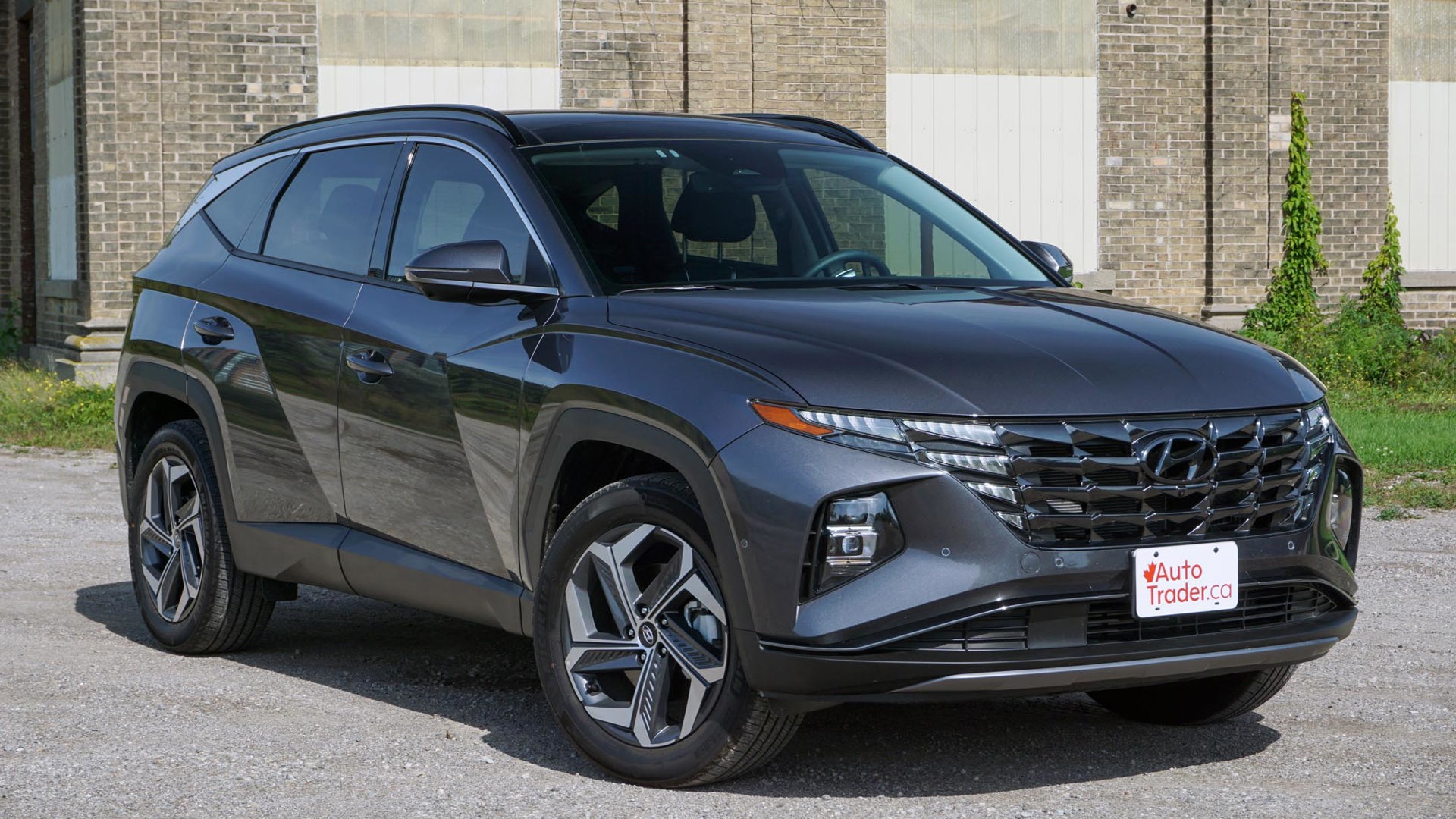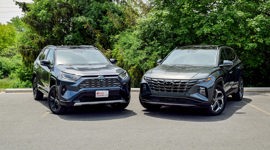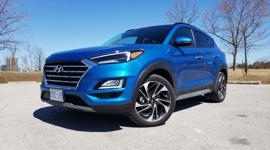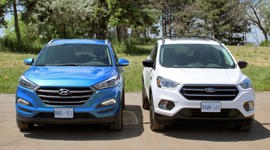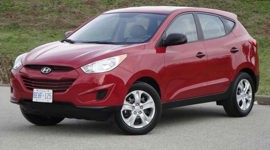 AutoTrader SCORE
AutoTrader SCORE
-
STYLING9/10
-
Safety9/10
-
PRACTICALITY10/10
-
USER-FRIENDLINESS9/10
-
FEATURES9/10
-
POWER10/10
-
COMFORT8/10
-
DRIVING FEEL10/10
-
FUEL ECONOMY9/10
-
VALUE9/10
With two new gas-electric SUVs arriving at just about the same time, it might seem like Hyundai has created some redundancy within its own lineup – or at least made it difficult to decide which is best.
After all, there isn’t much separating them in terms of size, and their fundamentals are identical, with the same mechanical and electrical components underpinning them. Hell, they’re even priced within spitting distance of each other, which only makes matters more complicated.
In reality, the choice is about as simple as they come: leave the Santa Fe, take the 2022 Hyundai Tucson Hybrid.
Power: 10/10
OK, the real reality is that it’s hard to go wrong with either one of these Hyundai-badged hybrid SUVs – and a big reason why is what drives them. They use the same 1.6L turbocharged four-cylinder engine and six-speed automatic transmission, both relative rarities in modern gas-electric machines, alongside a 44-kW electric motor. Together, those power sources provide 227 hp and 258 lb-ft of torque, all of which gets to the pavement via an all-wheel drive system that disconnects the rear ones from the equation when they aren’t needed.
It stands out here more than the slightly larger Santa Fe Hybrid that this gas–electric powertrain leans more heavily on the former than it does the latter. Particularly when accelerating from a stop – and even in fuel-saving eco mode – it’s quicker than the competition to kick over to internal combustion power. Pair that with the conventional automatic rather than the continuously variable transmission (CVT) typically found in hybrids and this Tucson performs with little indication that it’s different from the average small sport utility.
Fuel Economy: 9/10
Despite the tendency to get into the gas in a hurry, the Tucson Hybrid happily switches over to electric-only propulsion once cruising speed is reached – particularly on secondary highways where speeds stay below triple digits – and stays there for prolonged periods, with nothing more than a green indicator in the gauge cluster alerting the driver of the switch to emissions-free mode.
The same is true of the Santa Fe, though its biggest shortcoming is its relative inefficiency compared to the stalwart Toyota RAV4 Hybrid or segment-leading Ford Escape Hybrid. And while the Tucson employs the same gas–electric components as its slightly larger sibling, right down to the 1.49-kWh battery pack under the back seat, it’s the far more efficient of the two.
Officially, it’s rated to burn a combined 6.4 L/100 km – one litre less than the Santa Fe that weighs roughly 172 kg (380 lb) more. And while that’s still slightly worse than the Escape (5.9 with all-wheel drive) and RAV4 (6.0), as well as the Toyota Venza that uses the same underpinnings (6.1), it wasn’t difficult to bring the real-world average down even further. An initial test drive saw the Tucson consume 6.2 L/100 km over 200 km of cruising around town, on the highway, and along winding ribbons of road in Niagara Region’s wine country.
Driving Feel: 10/10
As is the case with the gas–electric Santa Fe, there’s little indication in everyday operation that this is a hybrid, and the transmission is a big reason why – but it’s not the only reason. Yes, that’s what helps this Tucson accelerate in a linear manner that’s far superior to any CVT-equipped vehicle out there; and it also means it’s quick to drop a physical gear or two (which can also be done via paddle shifters) when it’s time to pass. But rather than the sleepiness that’s often associated with efficiency, this is a perky little performer.
Regardless of how it’s powered the Tucson is about as enjoyable to drive as anything in the segment, including the Mazda CX-5 that’s often praised for its agility. While there is some body roll to contend with, steering response is compact-car sharp and leads to reassuring changes of direction while remaining firmly planted to the road below. The brakes, too, while featuring regeneration to put energy into the battery for later use, progressively bring the 1,735-kg (3,825-lb) SUV to a stop without the soft pedal feel that’s typical of hybrids.
Comfort: 8/10
Ride quality is mostly smooth, with what feels like short suspension travel coming across as slightly stiff. Still, it’s not much worse than the average entry in the segment and has no trouble creating a cozy drive experience. It’s only broken pavement that brings out the worst in the suspension damping, while road and wind noise is impressively hushed, with only the strongest gusts on a particularly blustery day requiring an extra notch or two of volume on the stereo while listening to a podcast.
Seating comfort in both rows of seats is top notch. In fact, it’s somewhat surprising just how supportive the back bench is, with thick cushions and just enough contouring to feel like passengers are a priority rather than an afterthought. Doubling down in that regard is rear-seat heat for outboard occupants that comes in both trims.
Ventilation for the front seats is also along for the ride in both versions to go with three-stage heat. So, too, is a heated steering wheel; and while it could be limited to this tester alone, the distribution was odd, with the top portion of the wheel piping hot but the nine- and three o’clock positions about as warm as an hour-old coffee in a porcelain mug.
Styling: 9/10
The overall design of the cabin also contributes to the Tucson’s coziness, with elements that wrap around both front-seat occupants, integrating the HVAC vents in a subtle and classy way. The plastic, with its brushed aluminum and gloss black finish, extends along the door panels and across the dash before continuing onto the centre stack, almost creating two separate pods for driver and passenger. When mixed with what Hyundai Canada calls grey leather (but in reality looks ivory white in execution), the Tucson now boasts one of the nicest cabins in the segment.
The exterior is far more subjectively judged, with a simple shape covered in angular creases and lines that are reminiscent of the current Lexus design language. The fascia features a toothy grin that combines grille and running lights into one, while the tailgate is bookended by fang-like taillights. The look is cohesive if nothing else.
User Friendliness: 9/10
Back inside, the centre stack is angled slightly towards the driver but skips the cockpit-like characteristics of the redesigned Hyundai Elantra that shares the same styling cues inside and out (and the Tucson is better for it). Unfortunately, it doesn’t share that compact sedan’s physical switchgear, with HVAC and audio controls beneath the infotainment display composed solely of capacitive touch sensors. While fairly responsive to inputs, nothing beats old-fashioned buttons and knobs for these functions. They will be missed come winter.
The infotainment interface, run through a 10.25-inch touchscreen in the top trim, is outstanding for its simplicity and response – though just like with other Hyundai products that utilize the large display, Android Auto and Apple CarPlay require hard connections rather than wireless ones. That makes the inclusion of a wireless charger redundant in this top trim since it can’t be used alongside either of those phone-mirroring systems. It also makes the absence of USB-C ports stand out more than it would otherwise, though there are two USB-A ports in each row of seats.
The Tucson is a classic example of a compact SUV that makes the most of its dimensions, with wide door openings that make climbing in and out about as easy as possible and deceptively large windows that provide outstanding outward views. The rear hatch, too, is big enough that it can swallow oversized items without issue, while quick-release handles allow the 60/40-split folding rear seats to be stashed from the cargo area.
Practicality: 10/10
While the Tucson Hybrid is more efficient than its Santa Fe counterpart, it delivers those noticeable gains without giving up much space inside. In fact, it has marginally more cargo space, with 1,097 L behind the back seats and 2,108 L with them folded (the Santa Fe provides 1,032 L and 2,041 L, respectively) despite measuring 155 mm (6.1 in) shorter from bumper to bumper and giving up 35 mm (1.4 in) in overall width.
Occupants will also find noticeably more headroom in the back of the Tucson, while legroom, at 1,050 mm (41.3 in) is barely off the mark set by the Santa Fe. It’s only cabin width that’s down considerably and yet the Tucson doesn’t feel narrow by any stretch – and, indeed, it isn’t any more cramped than the RAV4 or the Honda CR-V that isn’t sold as a hybrid in Canada. (If there’s anything to complain about it’s the Tucson Hybrid’s 52-L fuel tank that means a little less driving range between fill-ups than the Santa Fe and its 67-L tank.)
Features: 9/10
Hyundai has strategically packaged this hybrid powertrain as the only one available with the Tucson’s two top trims. That means all kinds of good stuff is included in both, like a 10.25-inch digital instrument cluster, an eight-speaker stereo, satellite radio, wireless phone charger, a panoramic sunroof, hands-free tailgate, heated and ventilated front seats, a heated steering wheel, and heated rear seats.
Apple CarPlay and Android Auto are standard, too, though both are wireless with the Luxury Hybrid’s eight-inch touchscreen; the top Ultimate trim gets wired connections to go with its larger 10.25-inch touch display. Other goodies included in the pricier of the pair include memory settings for the driver’s seat, an eight-way power-adjustable passenger seat, and Hyundai’s hokey remote-park system that allows the vehicle to be moved forward or back from outside the vehicle via buttons on the key fob. Of course, other good stuff is included in both trims, like alloy wheels, keyless entry with proximity sensor buttons on the front door handles, and push-button start.
Safety: 9/10
Just like the Santa Fe, the one item missing from this hybrid’s safety features list is a head-up display. Beyond that omissions, everything from automatic high-beam headlights to lane-following and lane-keep assist, forward collision warning with pedestrian and cyclist detection, and adaptive cruise control that works in stop-and-go traffic is included in both trims. There’s also blind-spot monitoring with rear cross-traffic alert, and an exit alert system that will warn occupants of approaching rearward traffic, though the top trim replaces the blind-spot warning indicators in the door mirrors with a camera-based system that displays a live look at either side of the vehicle in the gauge cluster when the signal is activated.
The overhauled Nissan Rogue boasts one of the best advanced adaptive cruise control systems in the business, leaving the so-called highway driving assist in the Tucson’s top trim as a close second. The system provides steering input to keep the vehicle centred within its lane markings, even on winding roads (assuming the driver’s hands remain on the wheel), but is constantly applying micro-corrections that the Rogue’s system doesn’t. It can, however, be disengaged via a button on the steering wheel without disabling lane-keep assist.
Value: 9/10
With a two-trim strategy for this Tucson Hybrid, pricing skews slightly to the more expensive end of the spectrum than the Escape and RAV4 hybrids, but it’s far better equipped than both of them. Realistically, its pre-tax pricing of $40,624 for the Luxury Hybrid and $43,324 for the Ultimate Hybrid – both including an $1,825 freight fee – is more in line with the loaded Escape Titanium Hybrid with its available options ($42,549) or RAV4 Hybrid Limited ($45,210), as well as the hybrid-only Venza ($40,350 to $49,550, depending on trim). The Santa Fe, meanwhile, is priced at $43,324 and $45,724 for either of its available hybrid trims.
The Verdict
Parked next to the 2022 Hyundai Tucson Hybrid, the gas–electric Santa Fe is best described as being in the wrong place at the wrong time. Make no mistake: there’s nothing inherently wrong with the slightly larger of the two that’s just as enjoyable to drive, with performance that stands out for feeling like that of a conventional SUV. If anything, its ride quality is slightly superior to the Tucson’s, and it has a little more room inside for people.
But the Tucson hits back with that all important hybrid quality of delivering small-car efficiency in a practical package. It’s also plenty roomy in its own right, and packs plenty of space for stuff. Its upper echelon pricing means it’s not as appealing as key competitors – at least not at face value – and it’s slightly less efficient both on paper and in practice. But as a total package, this Tucson Hybrid is an impressive machine, and for how little it trails the Escape and RAV4 at the pumps it blows them both away in the driving department.
| Engine Displacement | 1.6L |
|---|---|
| Engine Cylinders | Hybrid I4 |
| Peak Horsepower | 227 hp net |
| Peak Torque | 258 lb-ft net |
| Fuel Economy | 6.3 / 6.6 / 6.4 L/100 km cty/hwy/cmb |
| Cargo Space | 1,097/2,108 L seats up/down |
| Model Tested | 2021 Hyundai Tucson Ultimate Hybrid |
| Base Price | $41,499 |
| A/C Tax | $100 |
| Destination Fee | $1,825 |
| Price as Tested | $43,624 |
|
Optional Equipment
$200 – Deep Sea Blue Paint, $200
|
|
